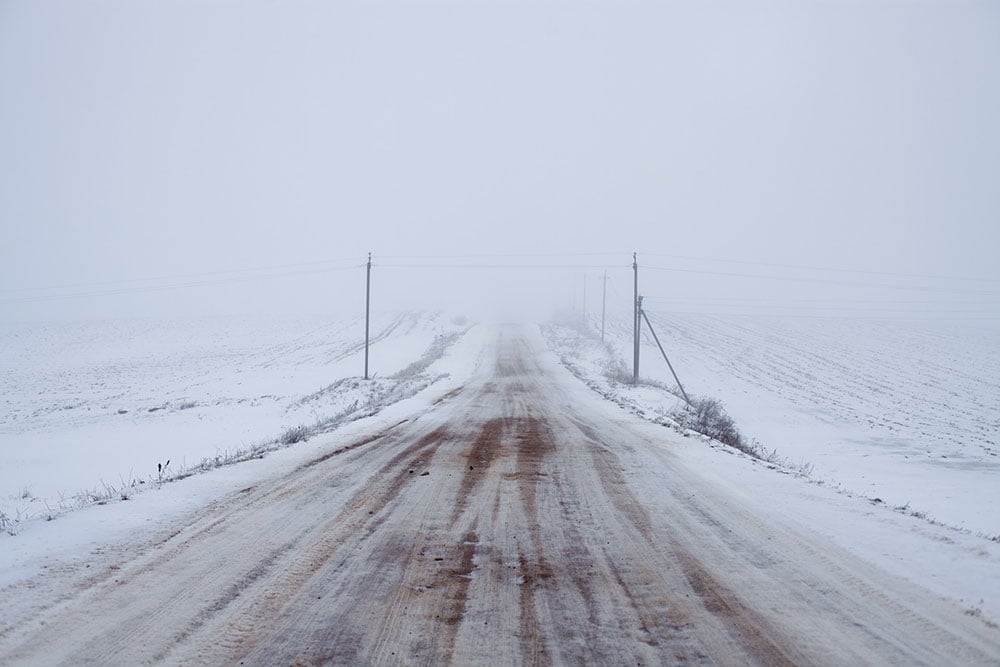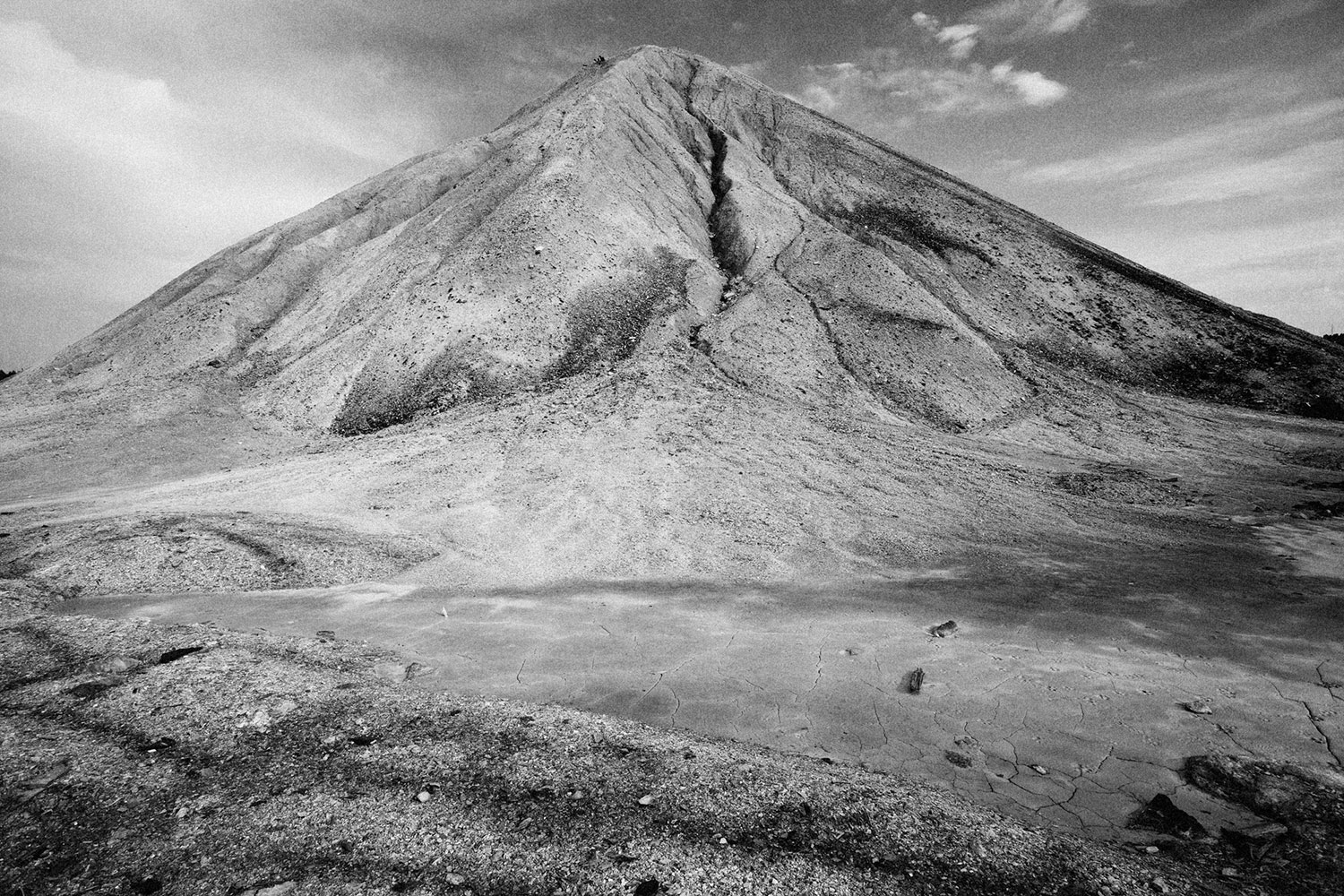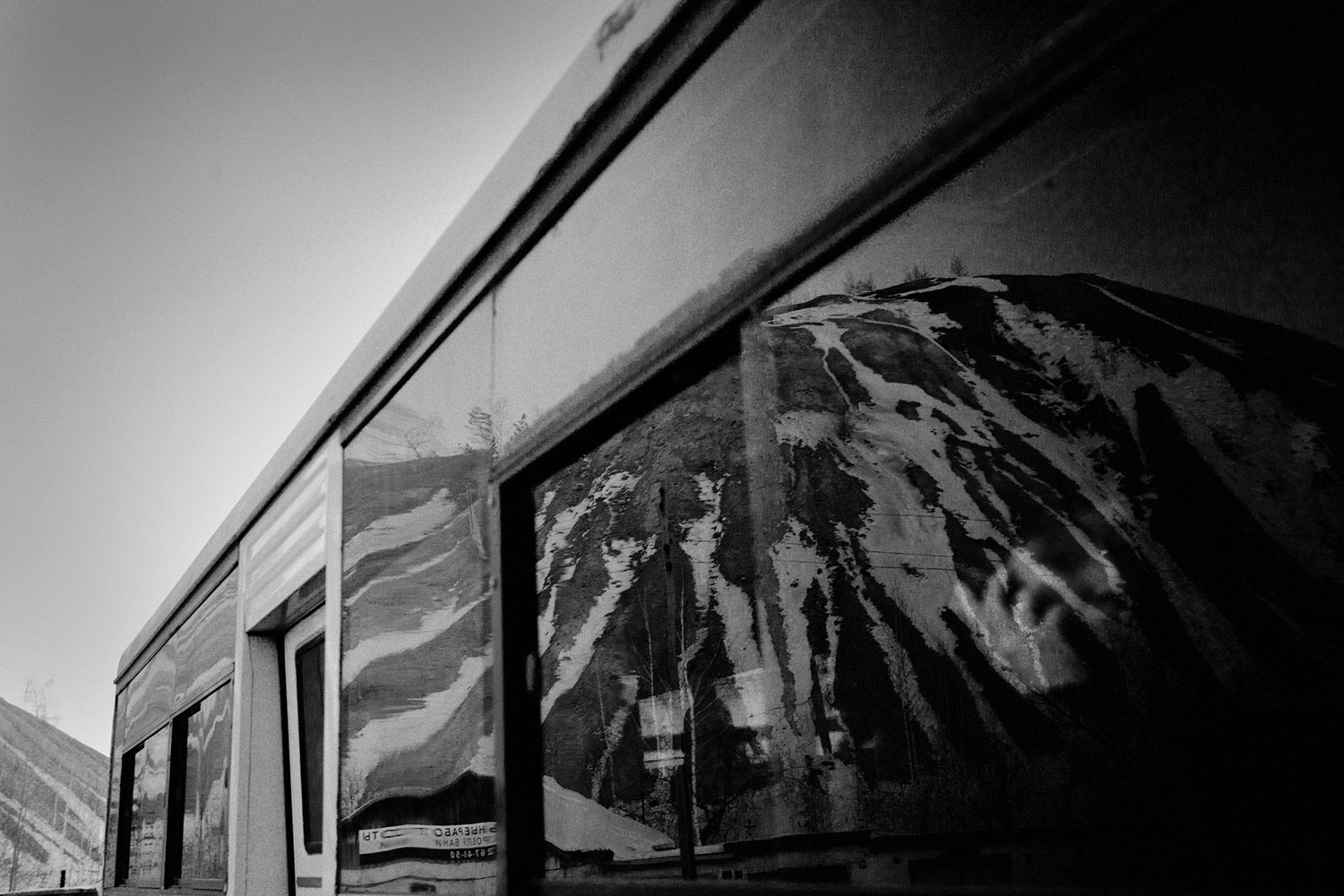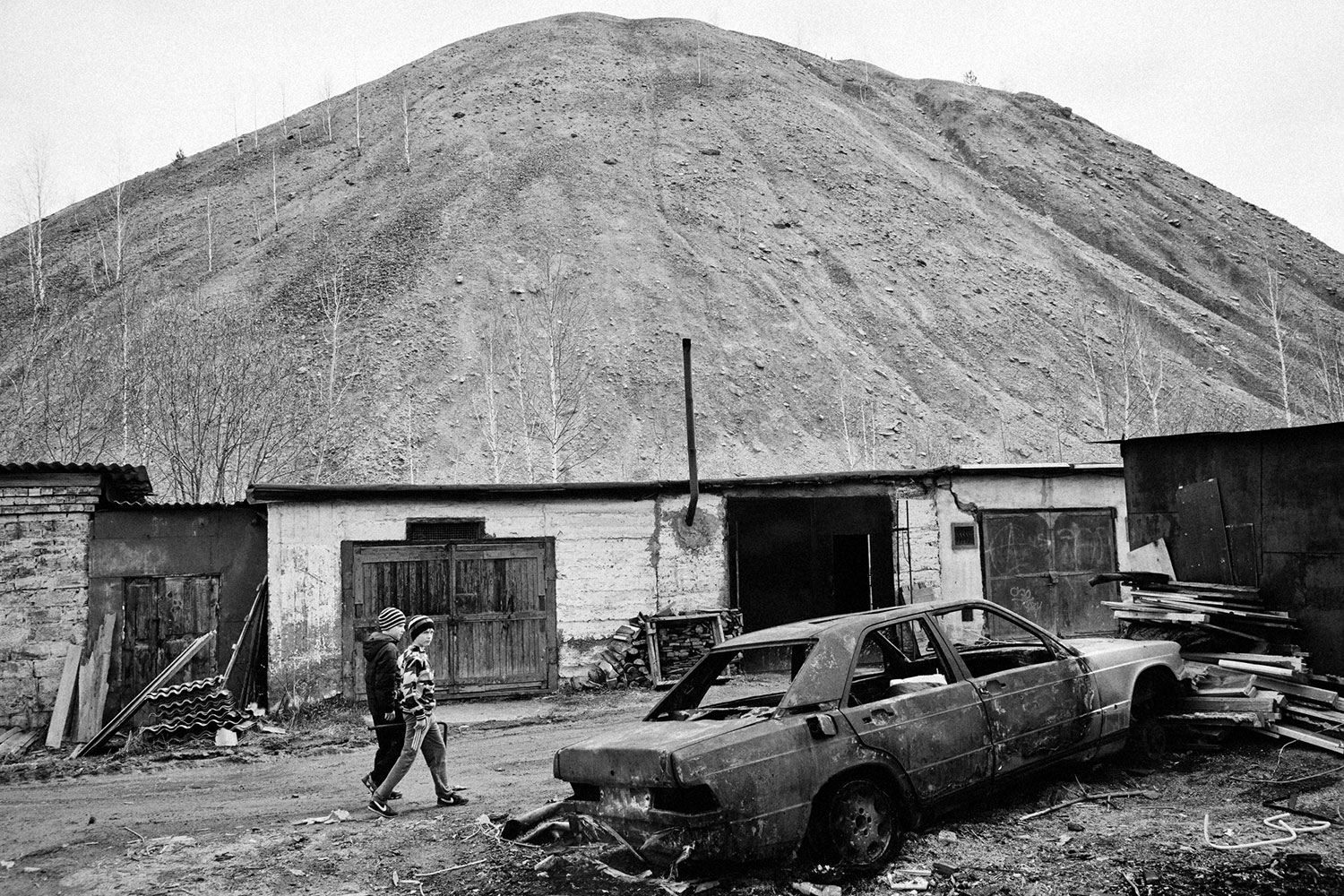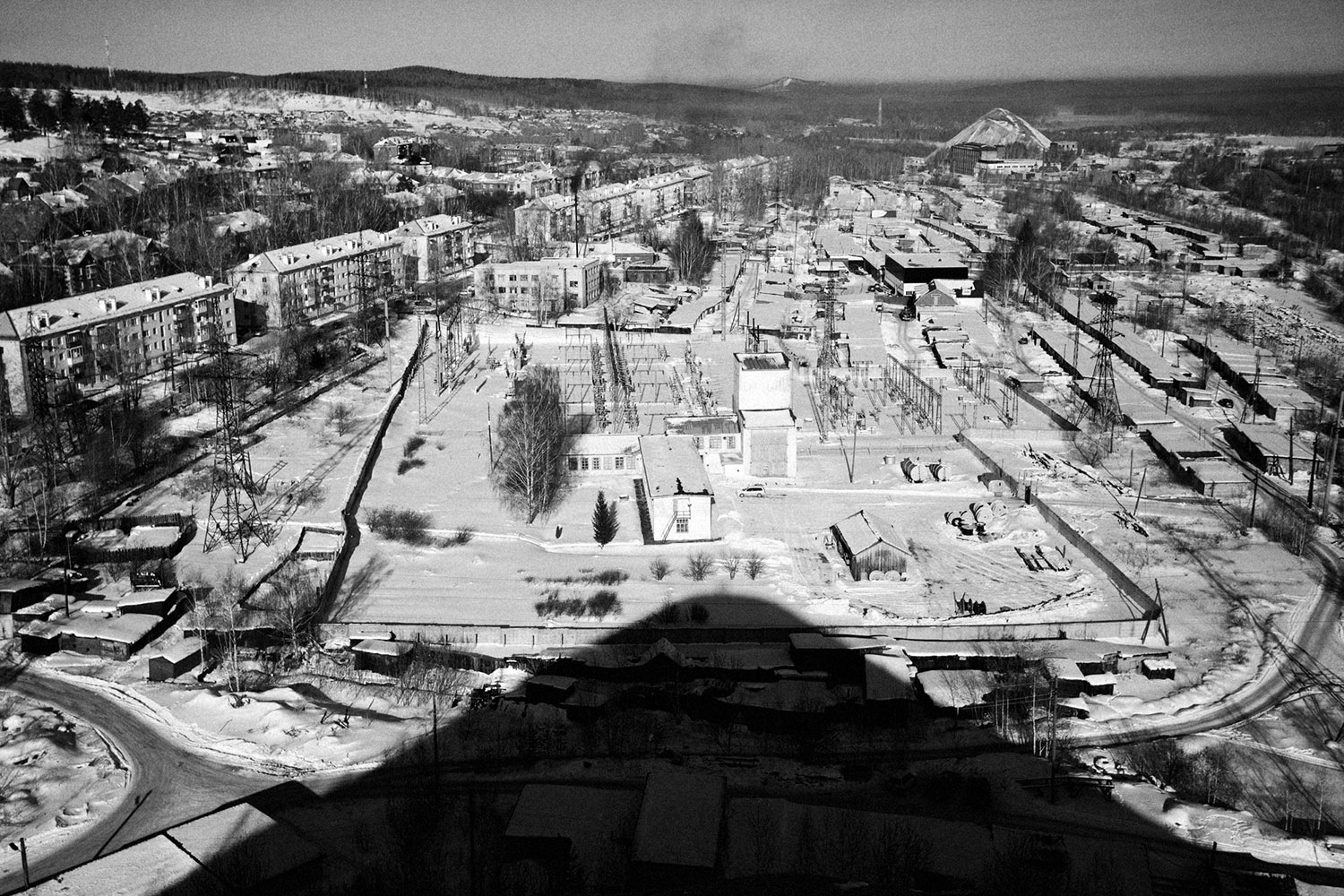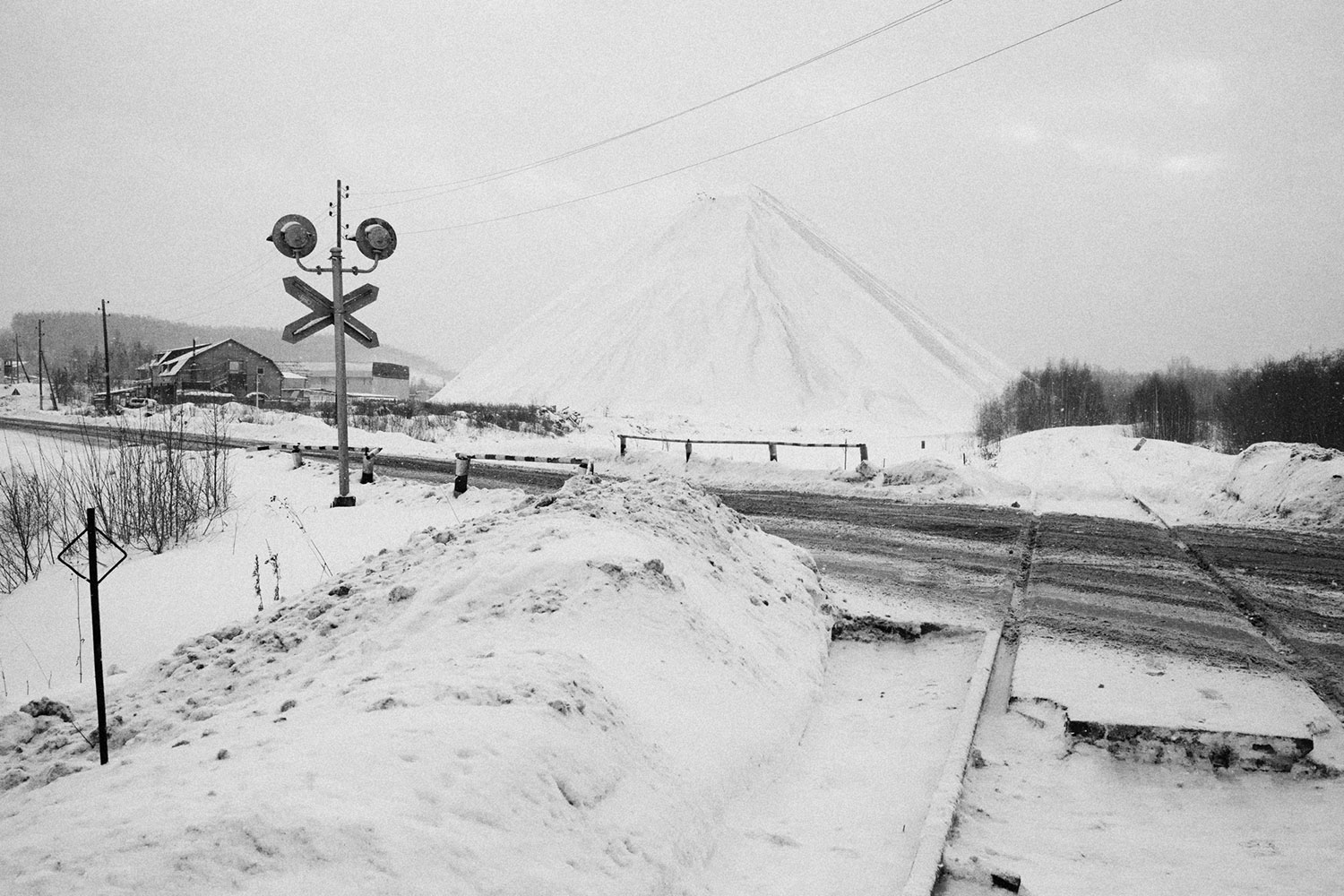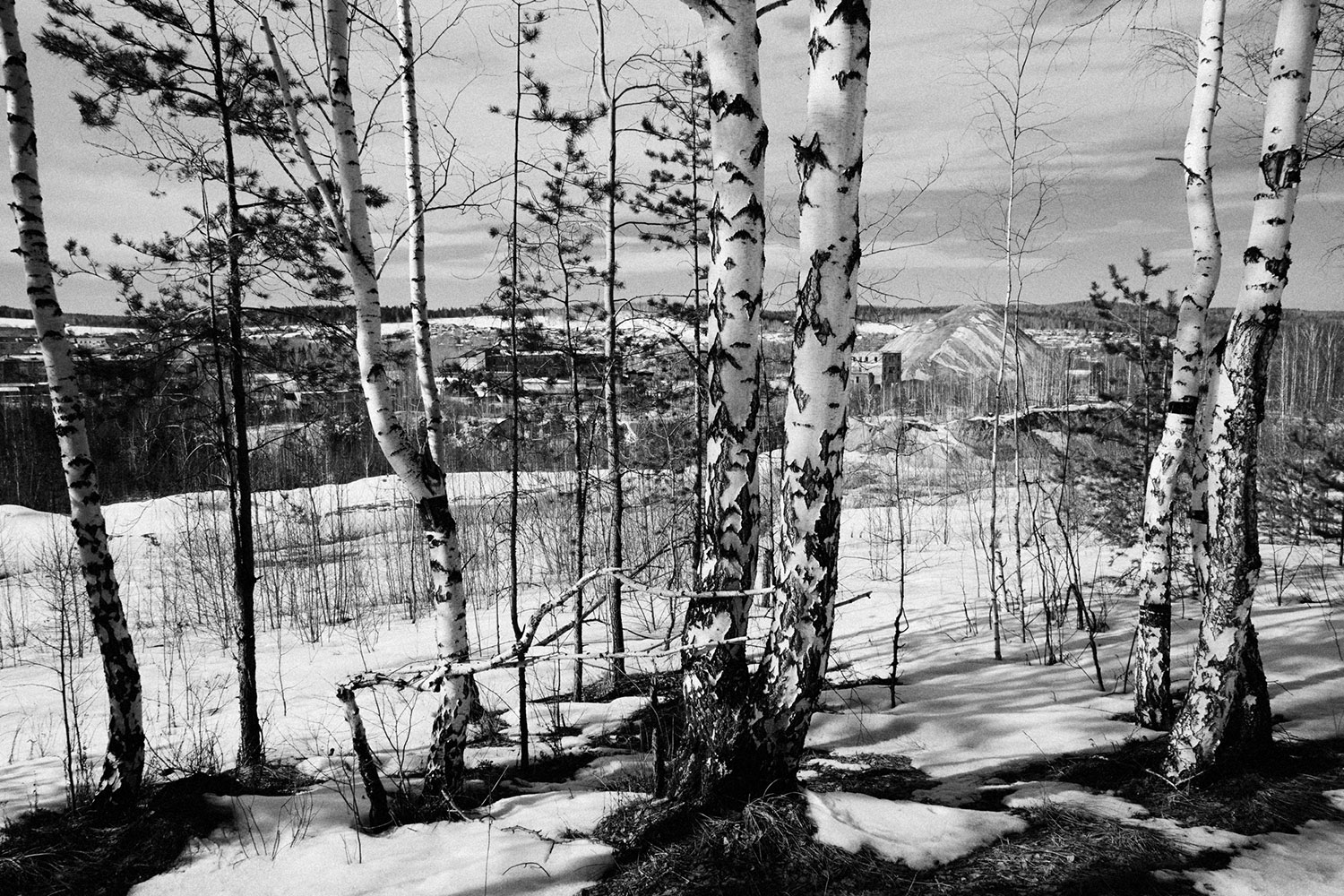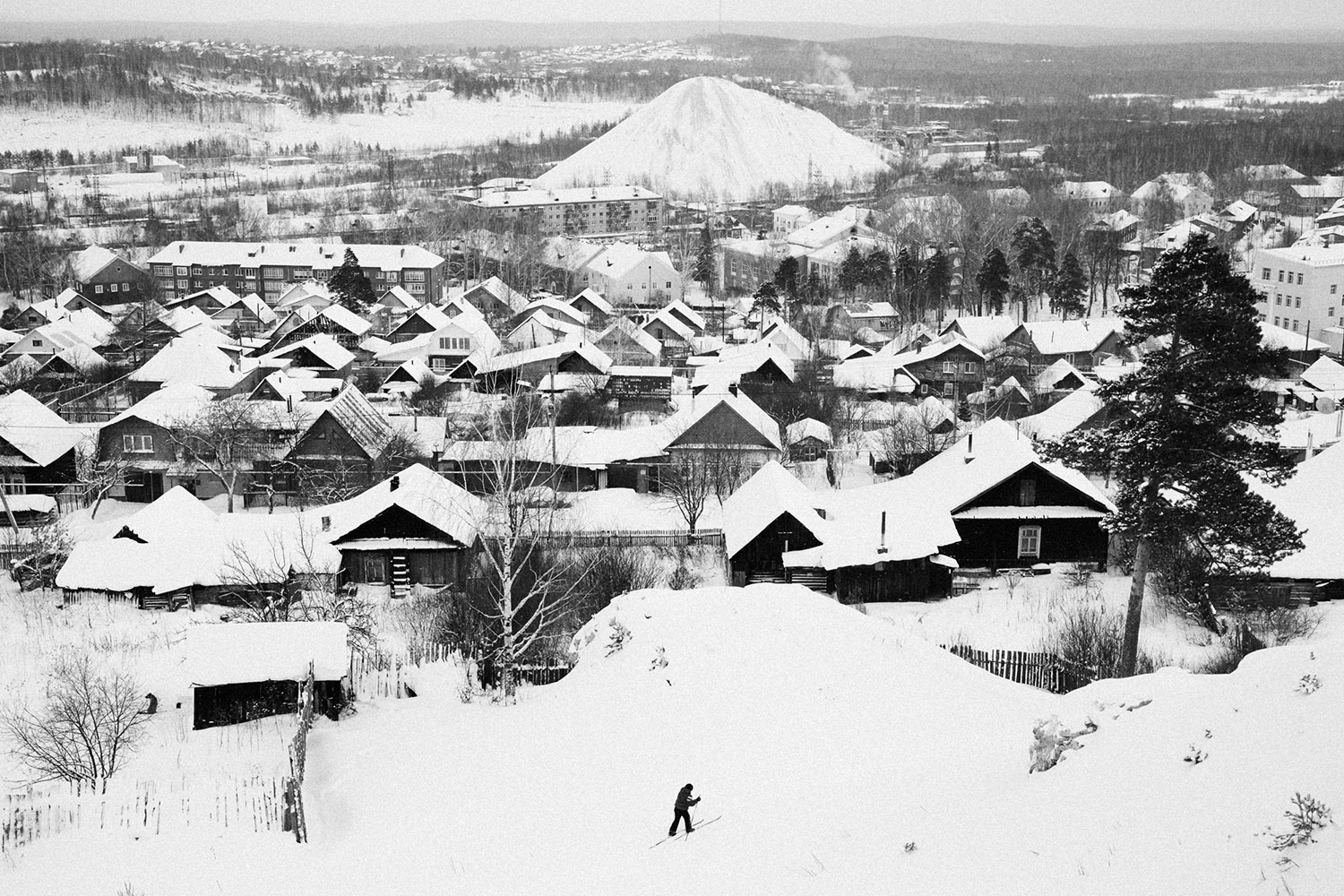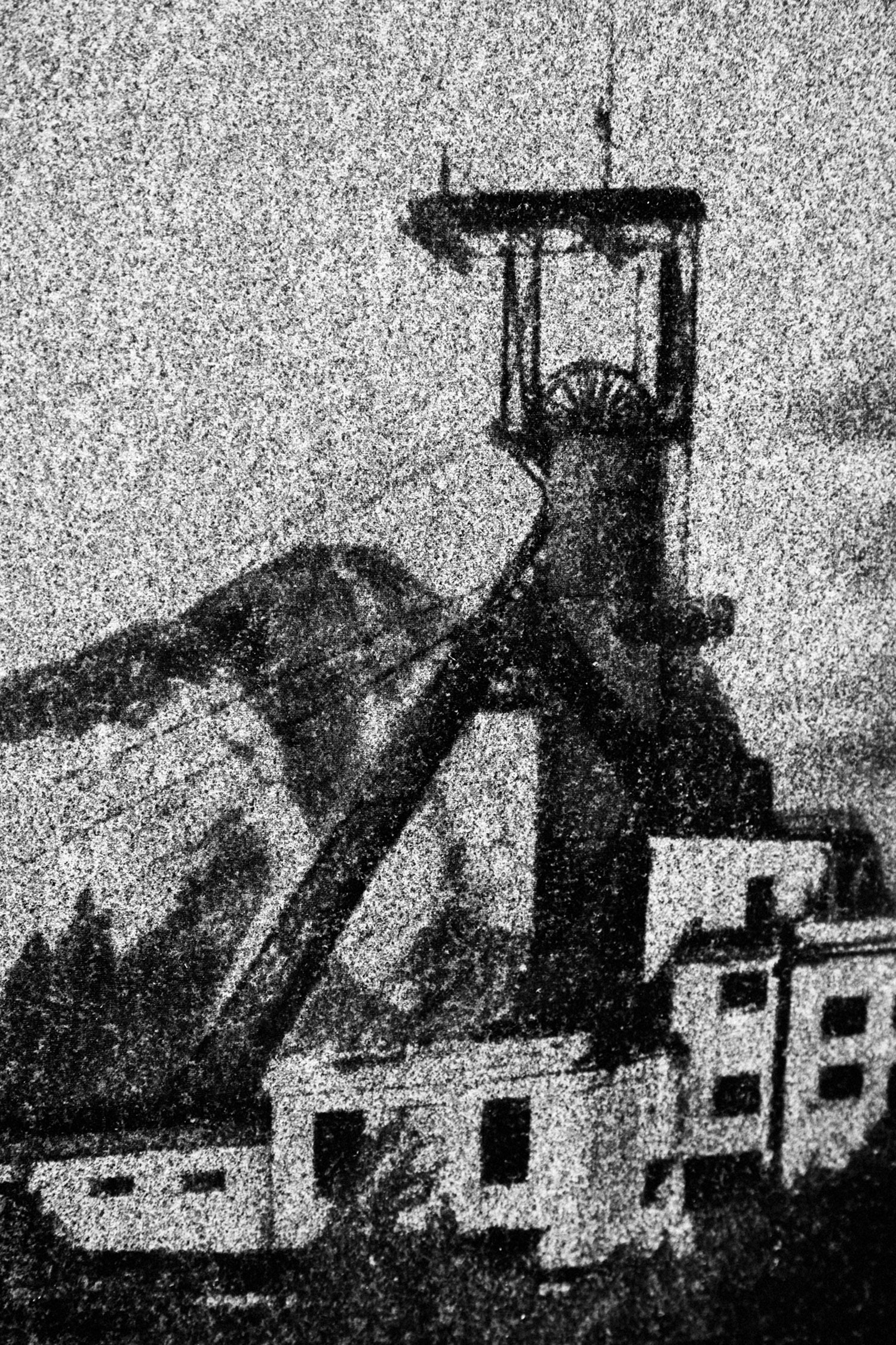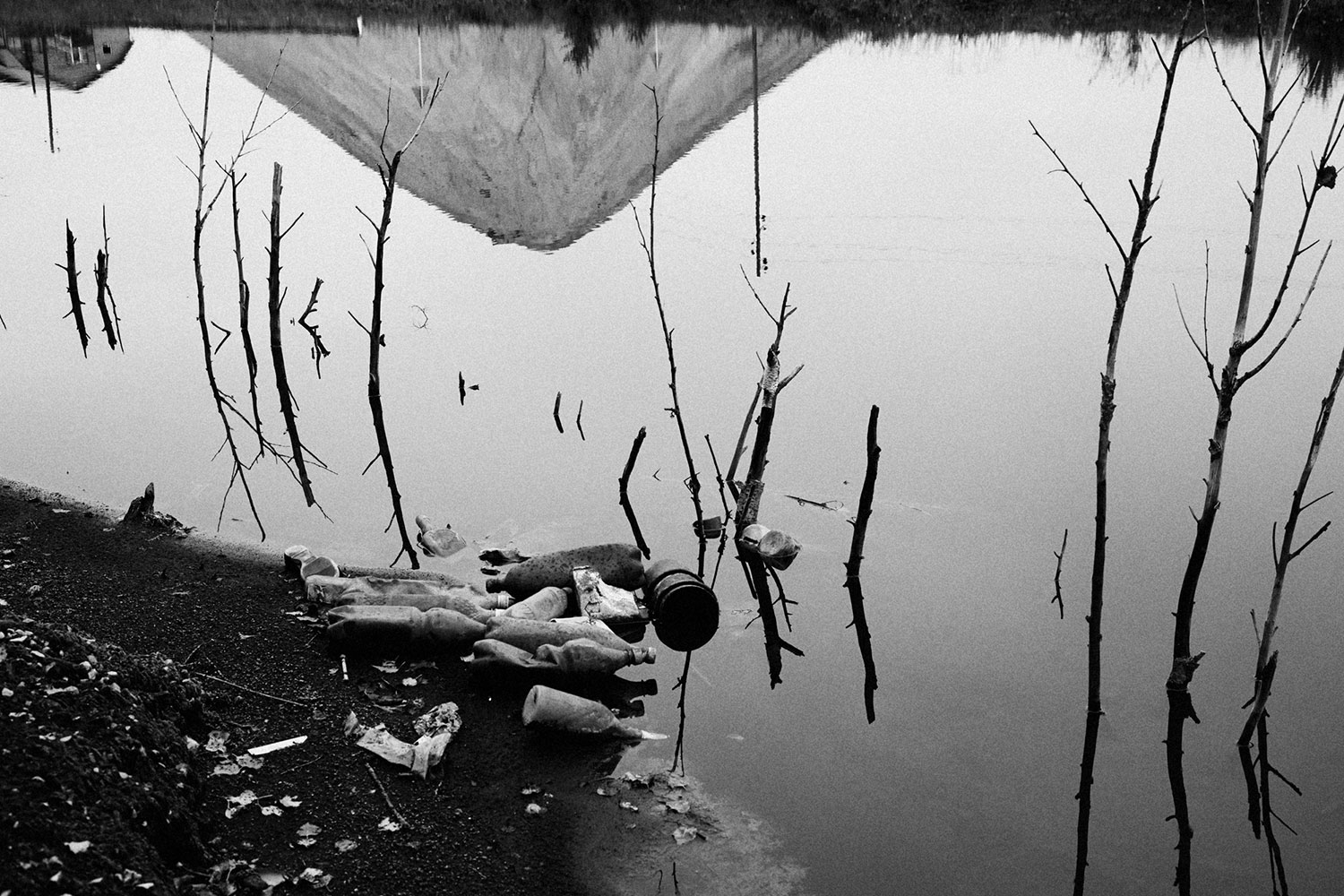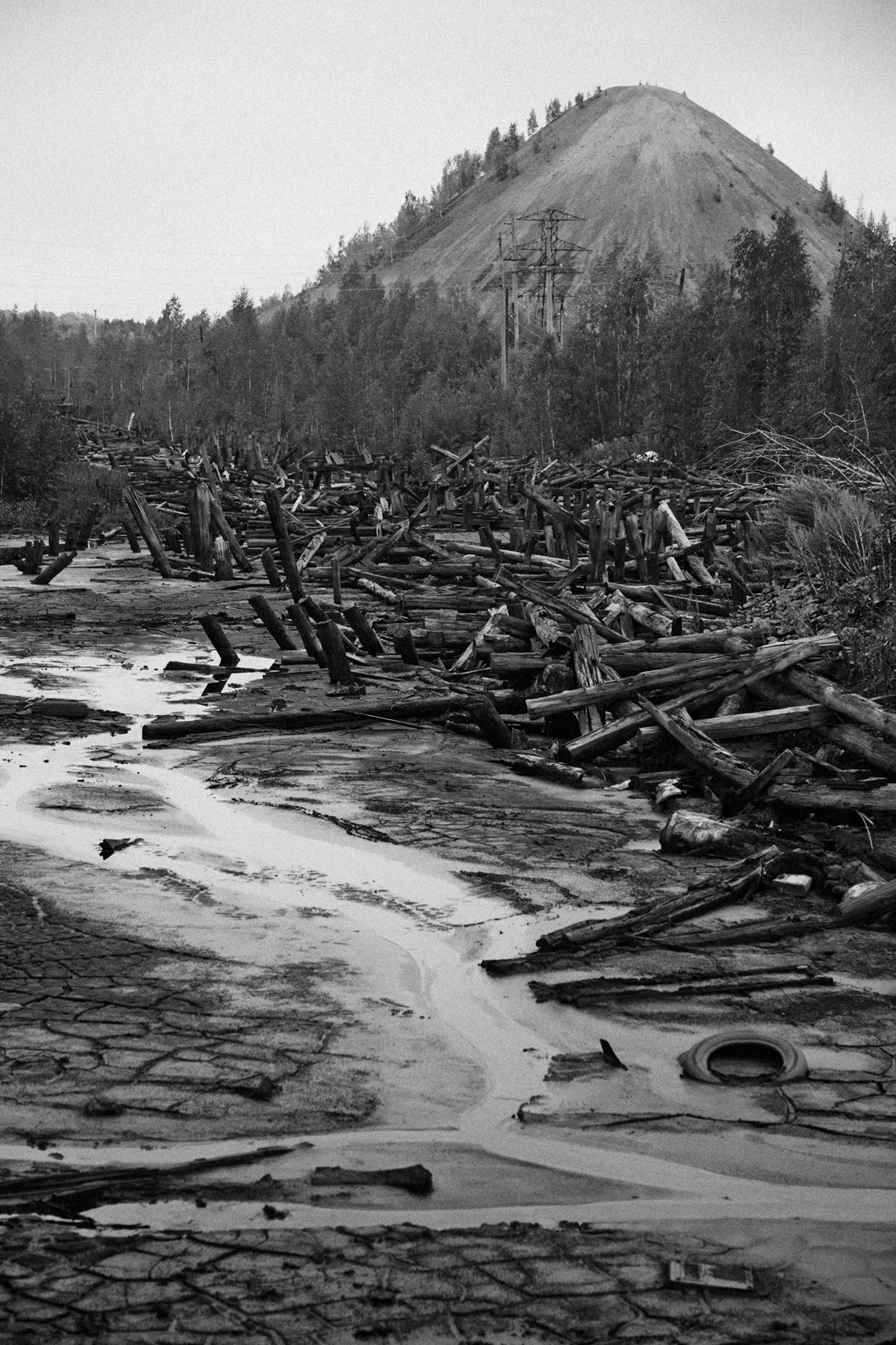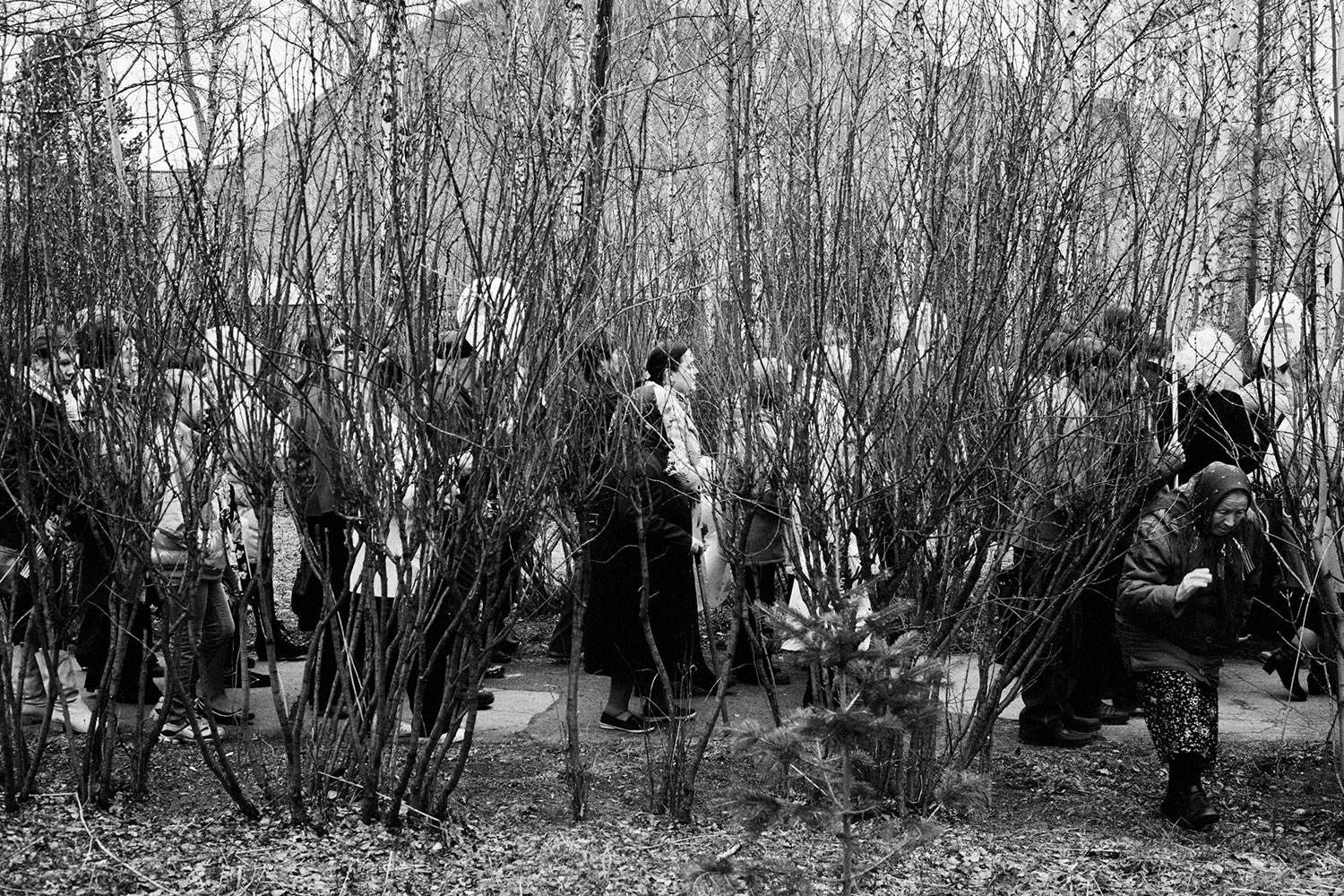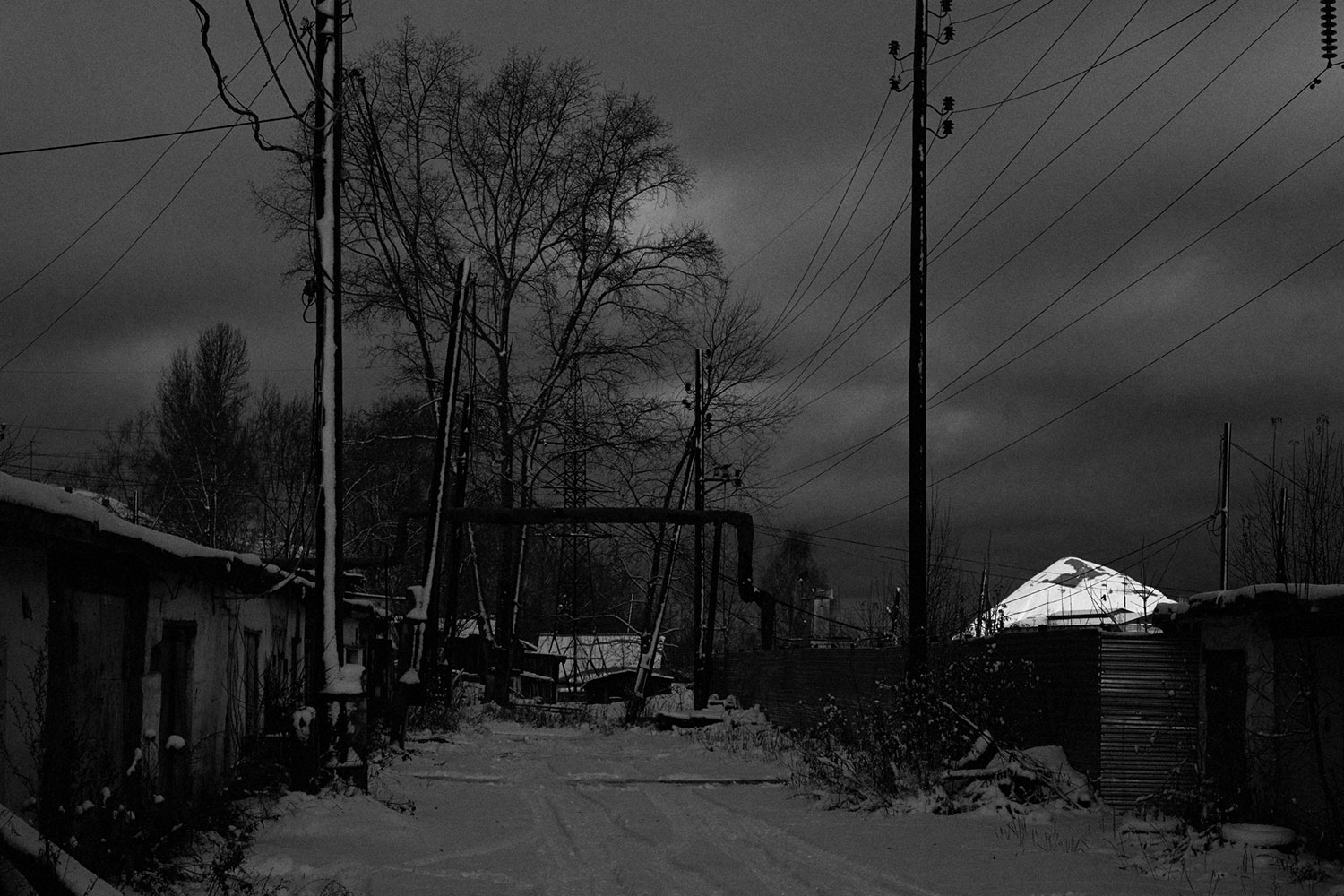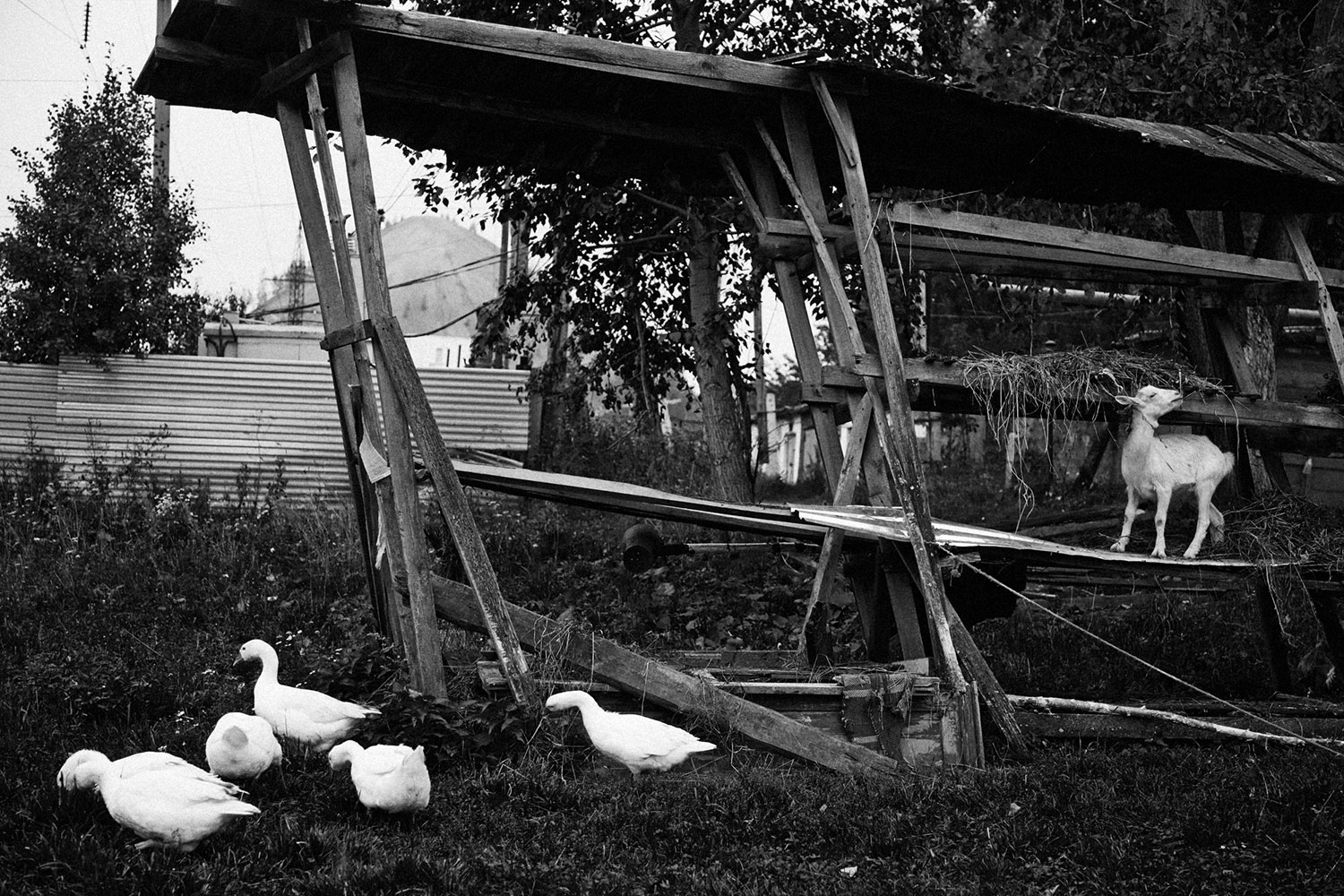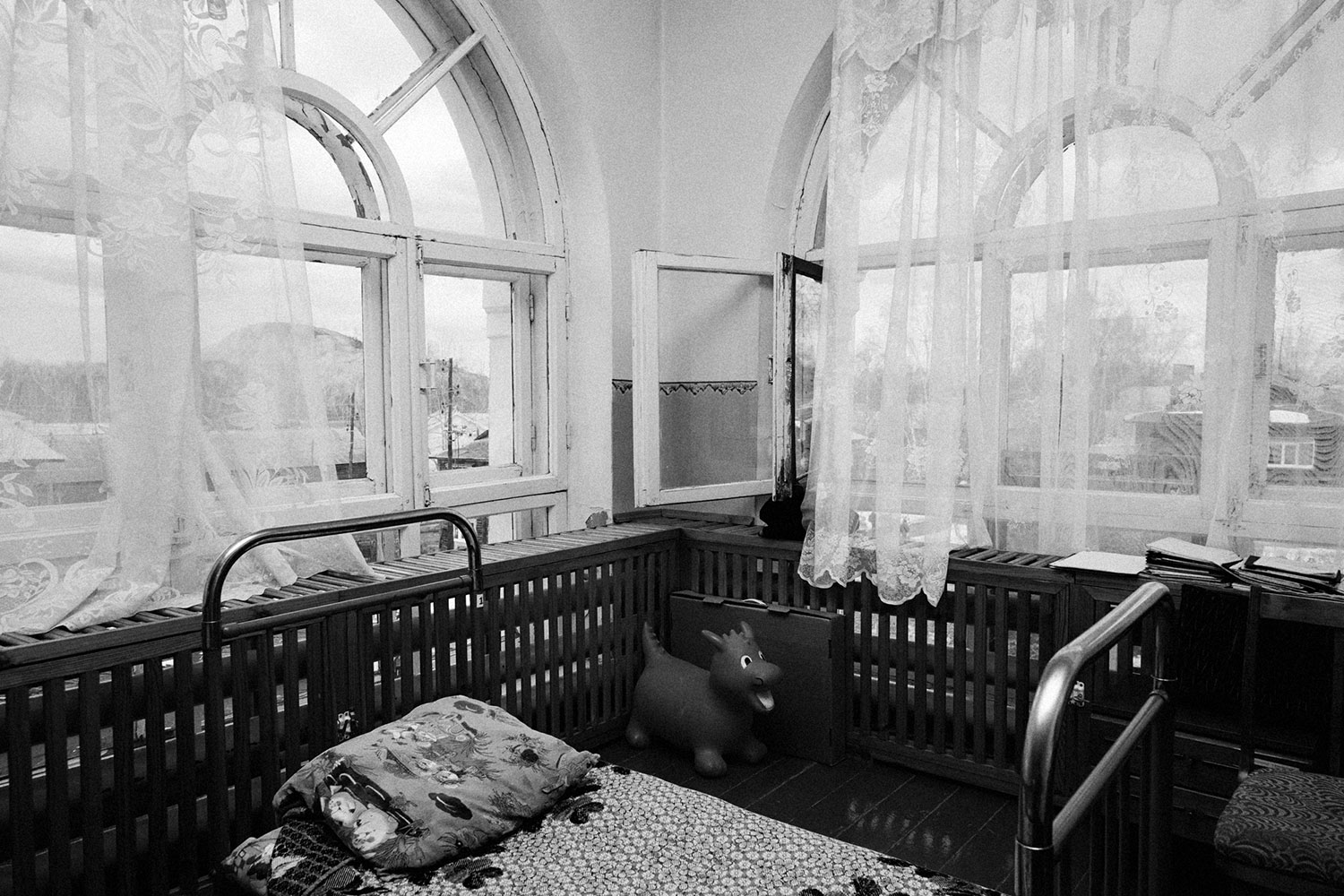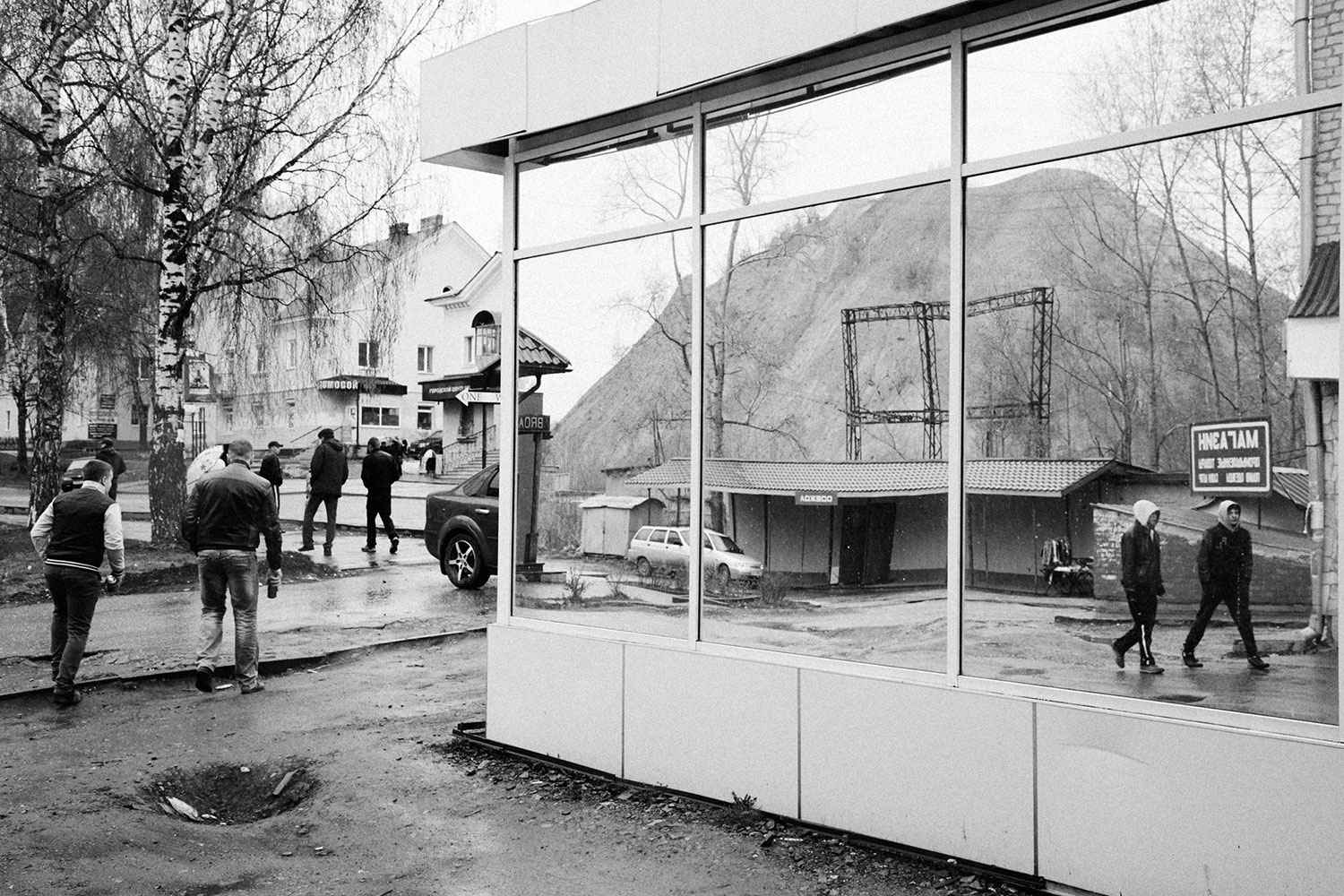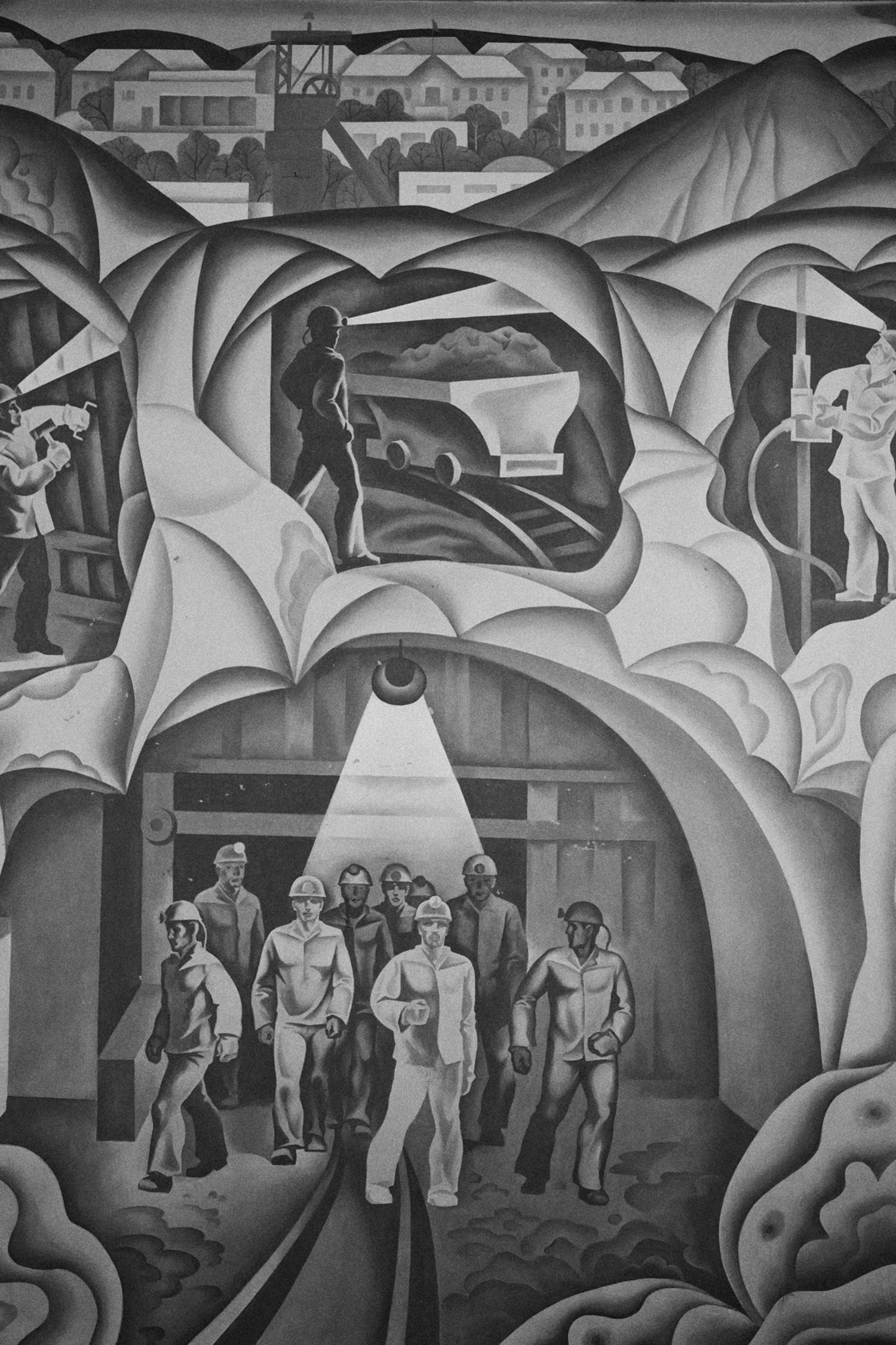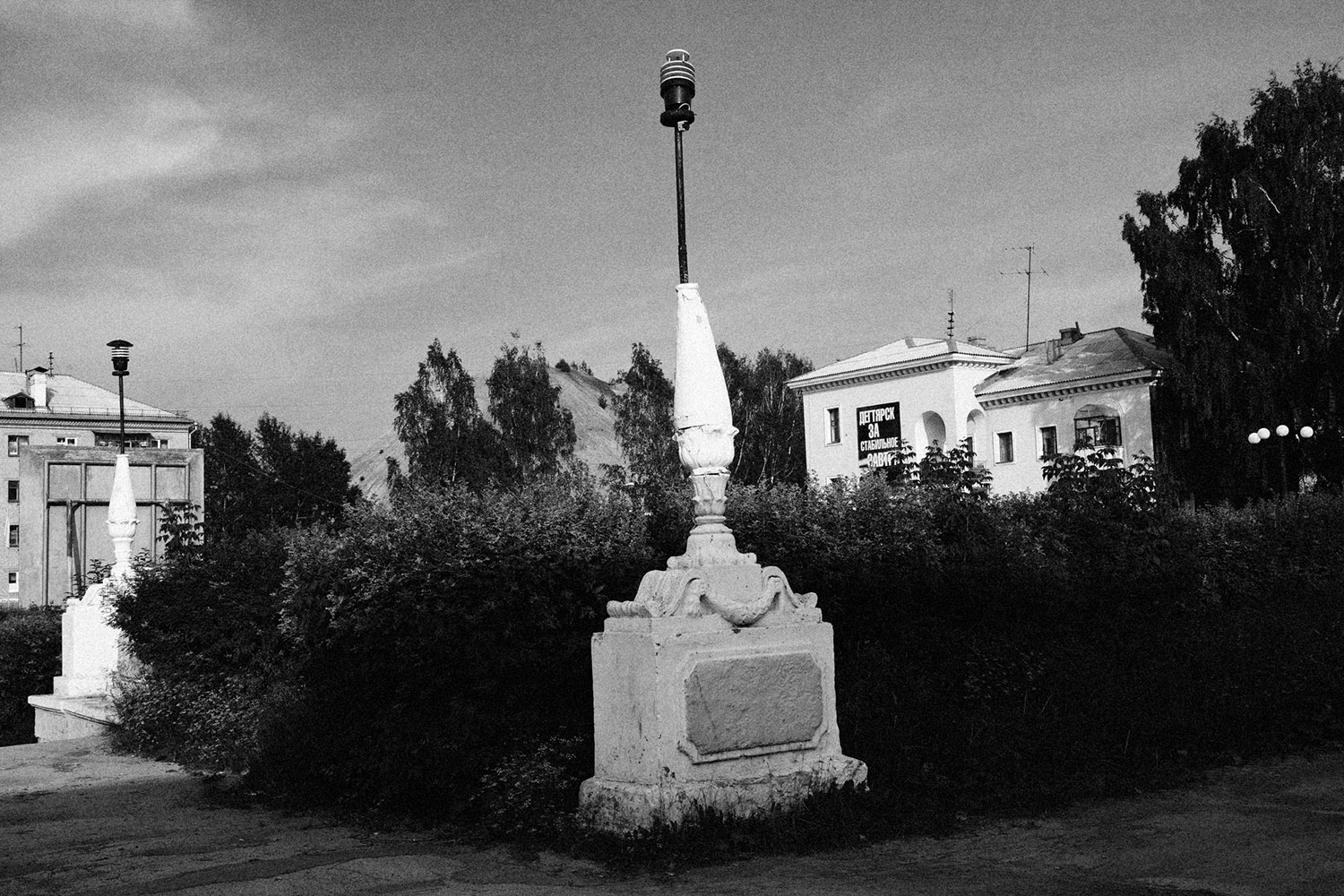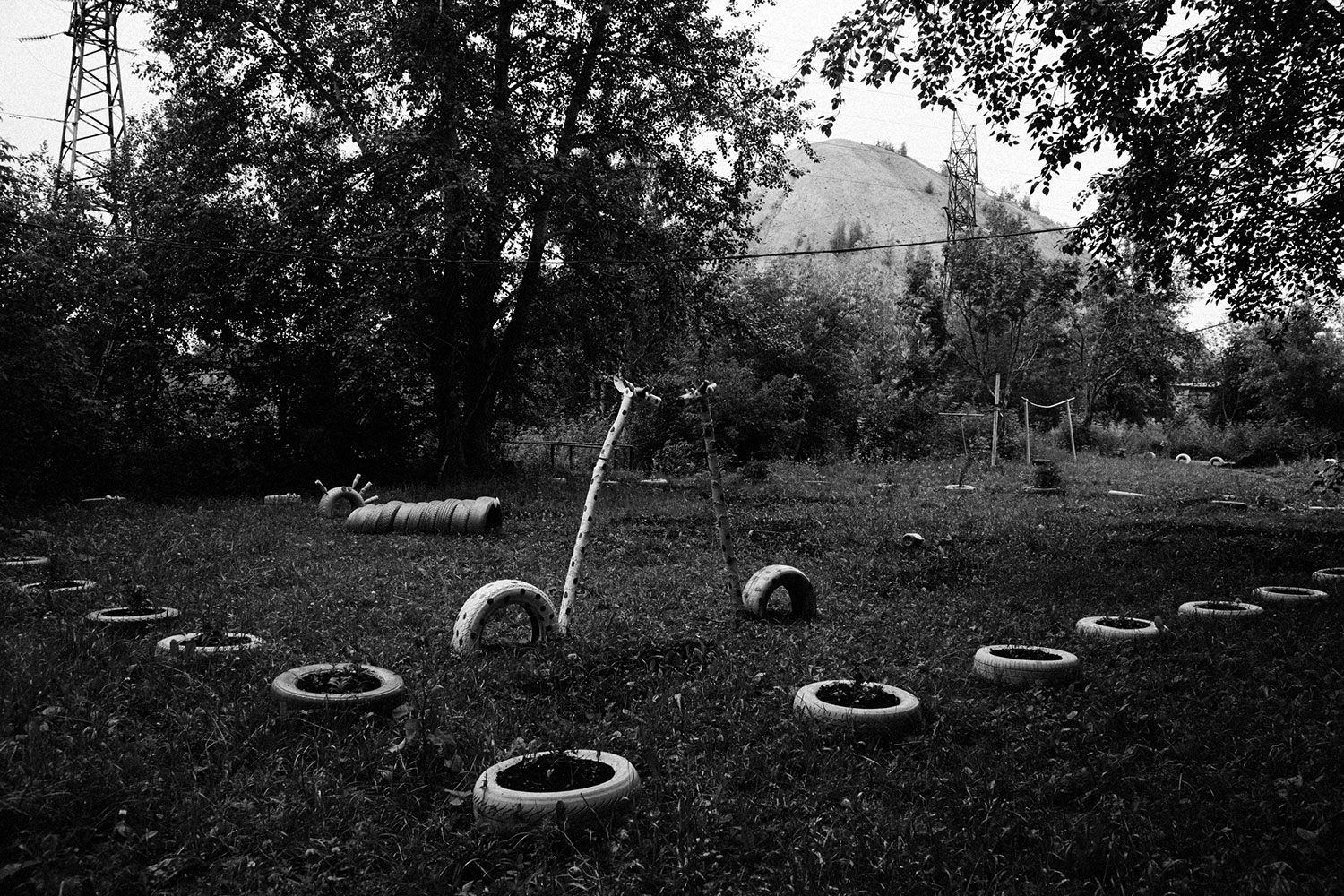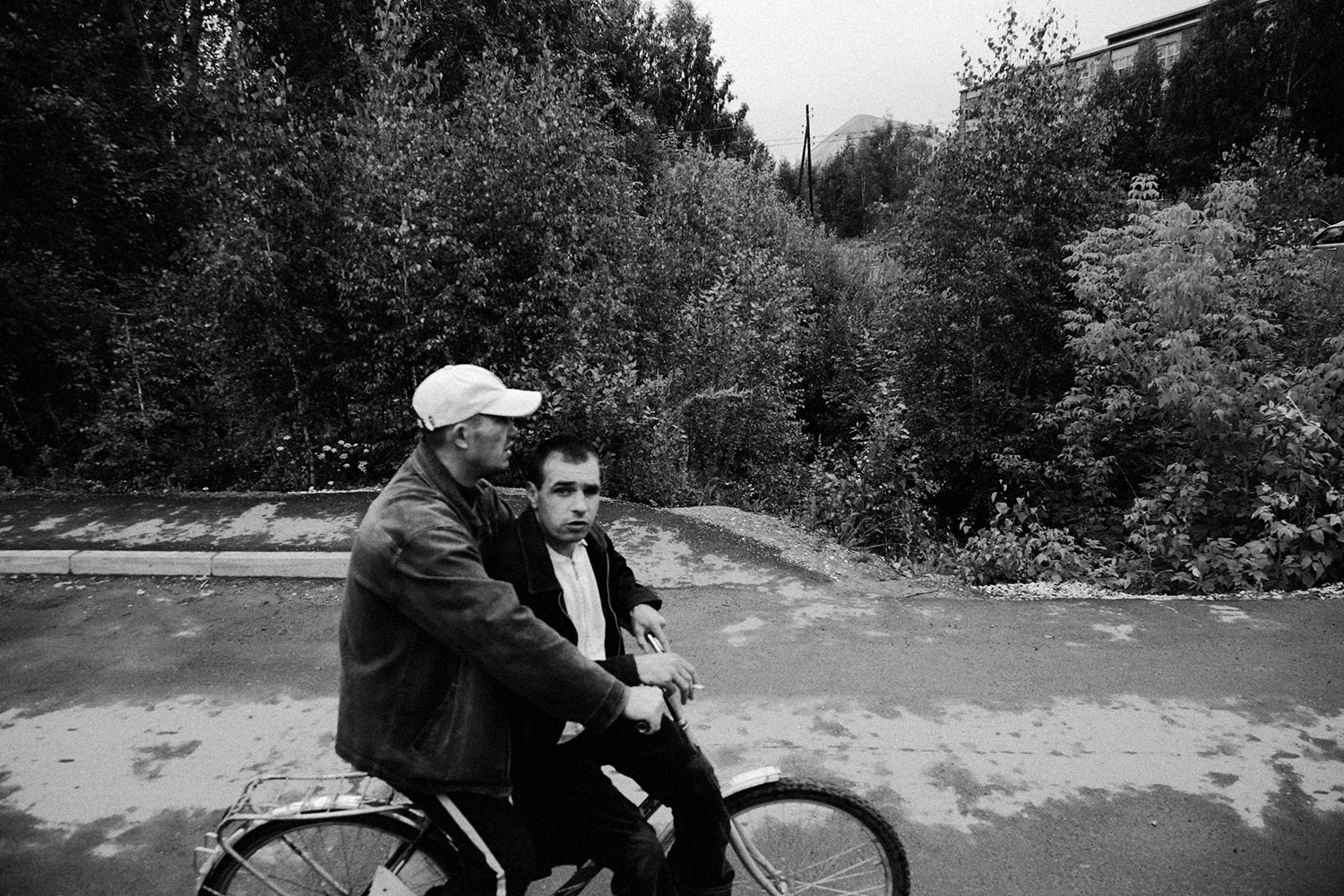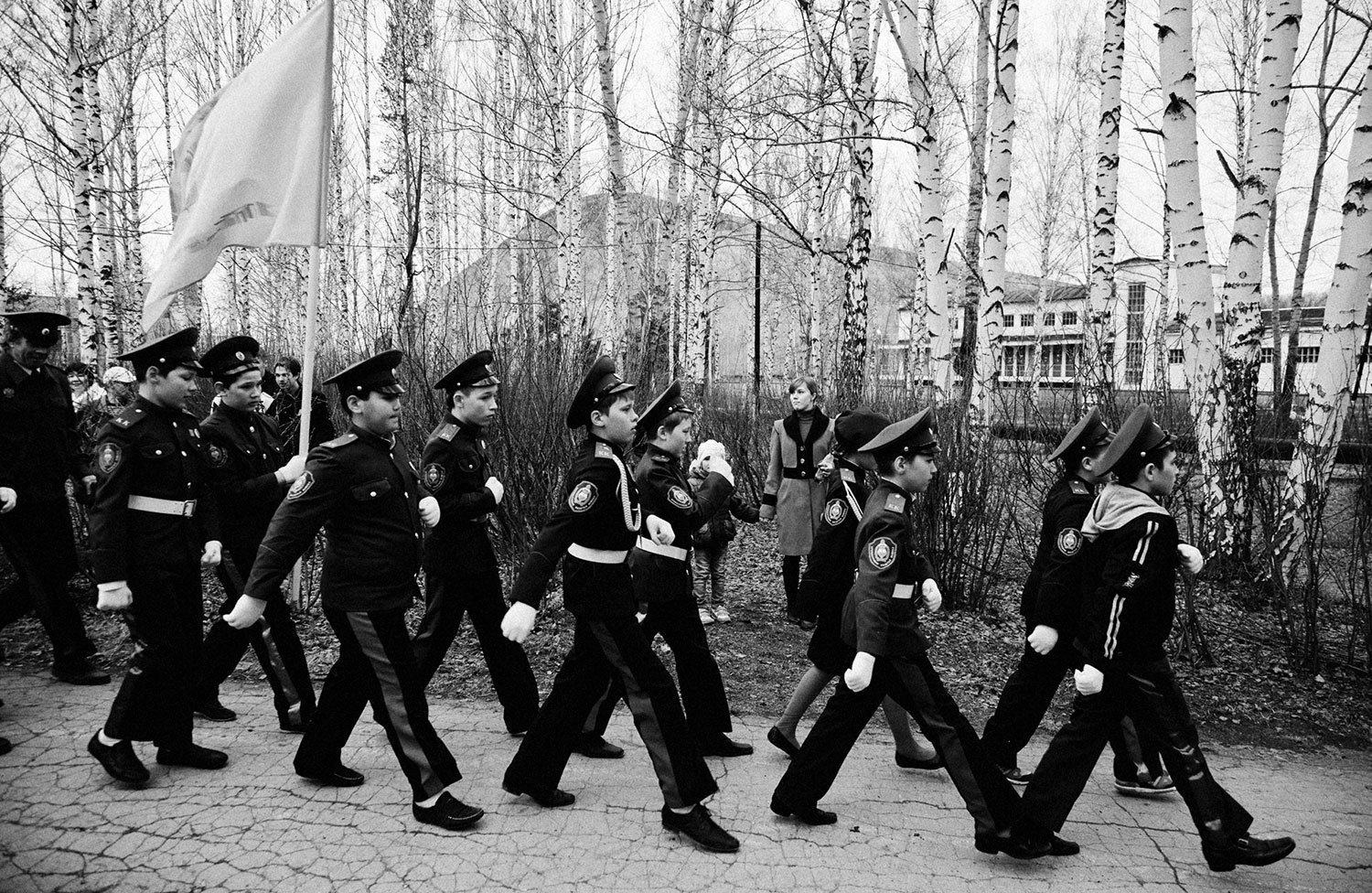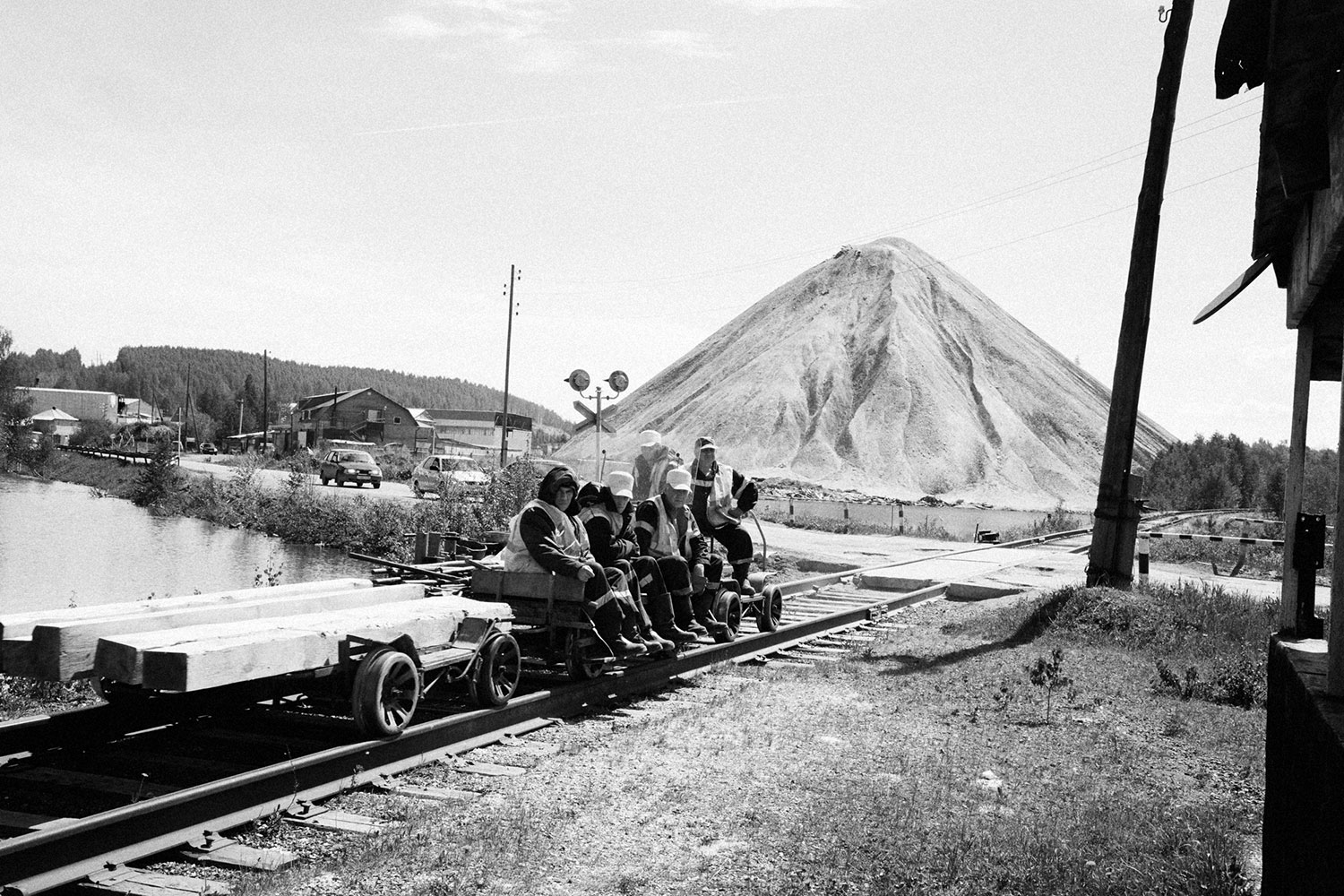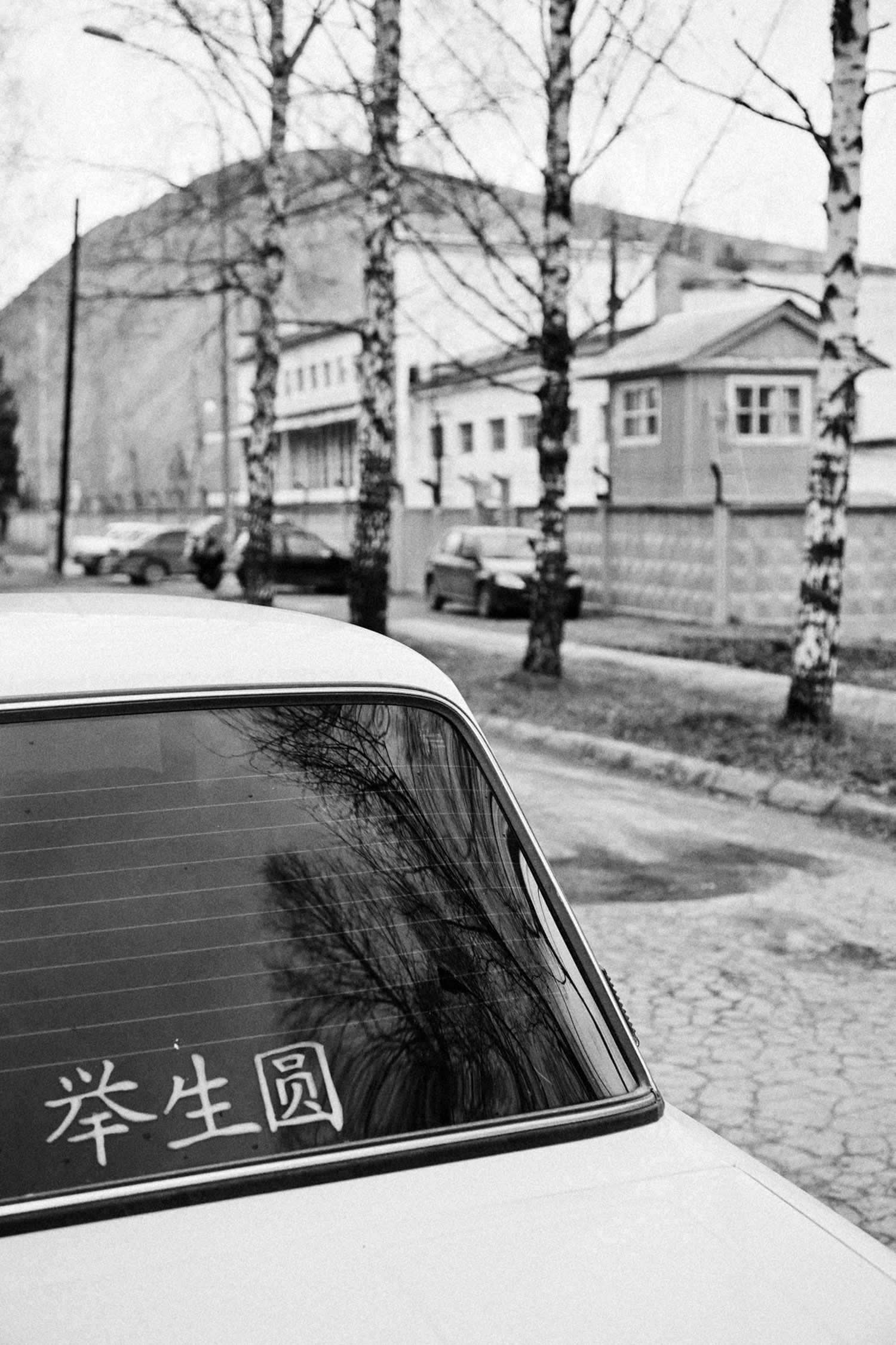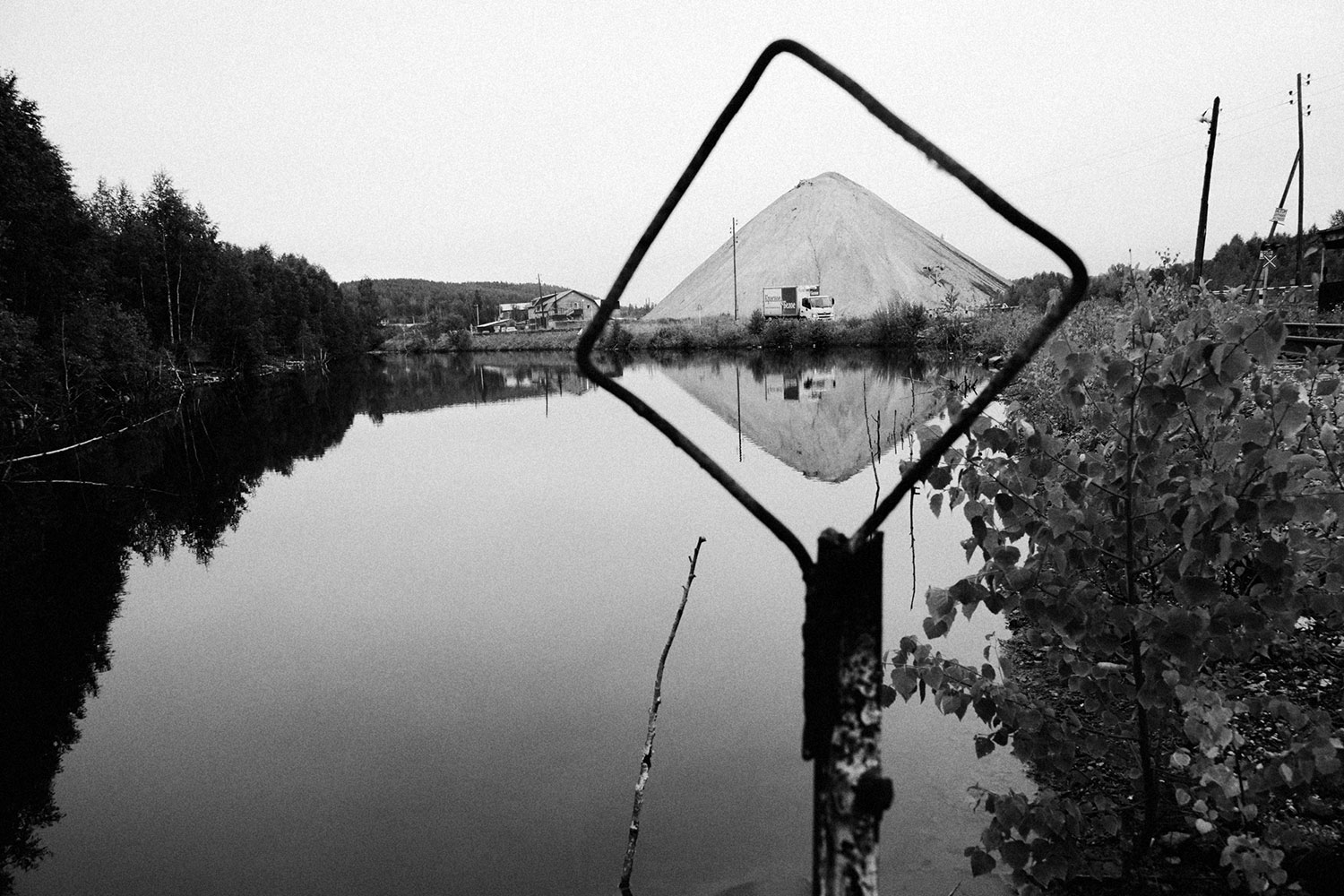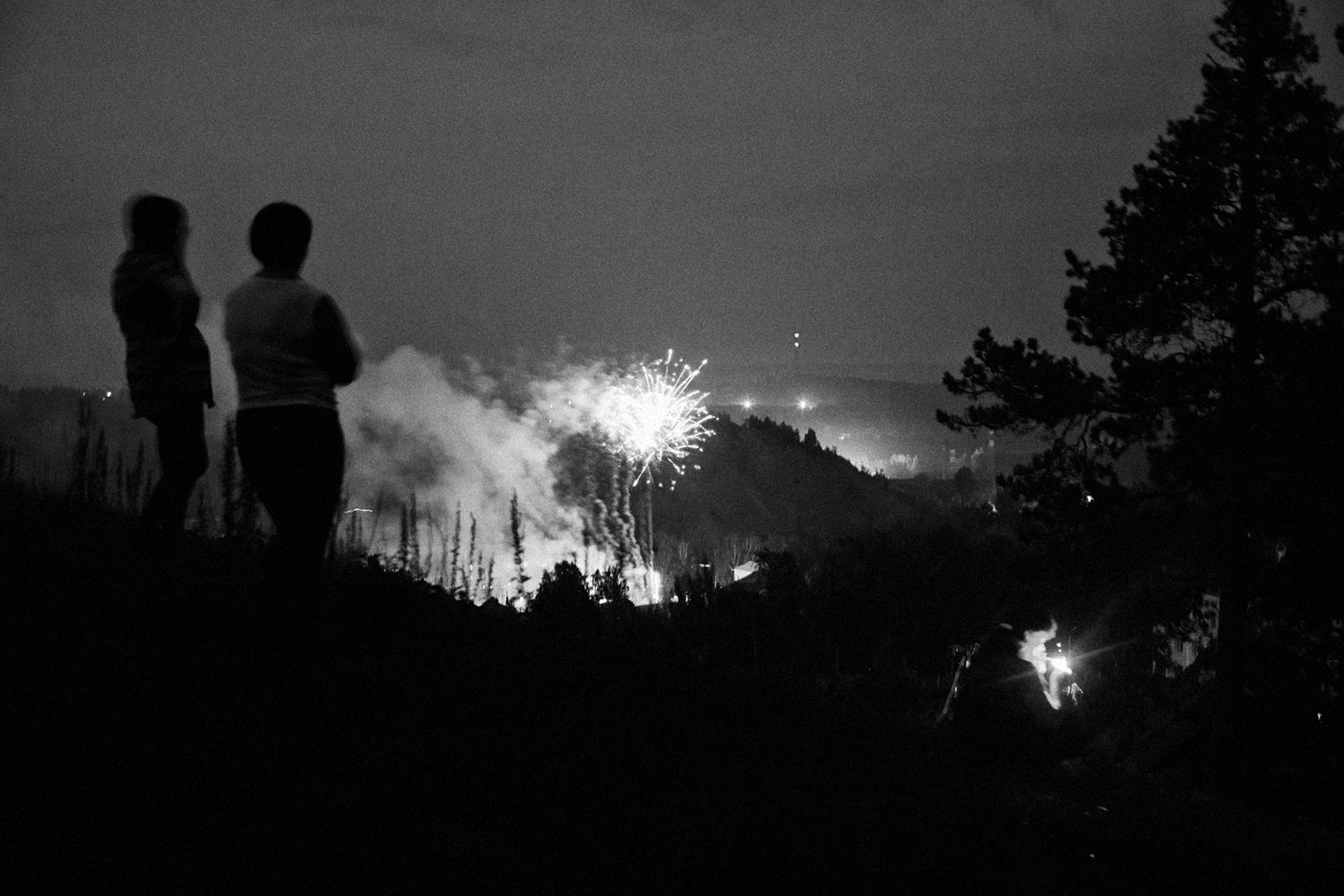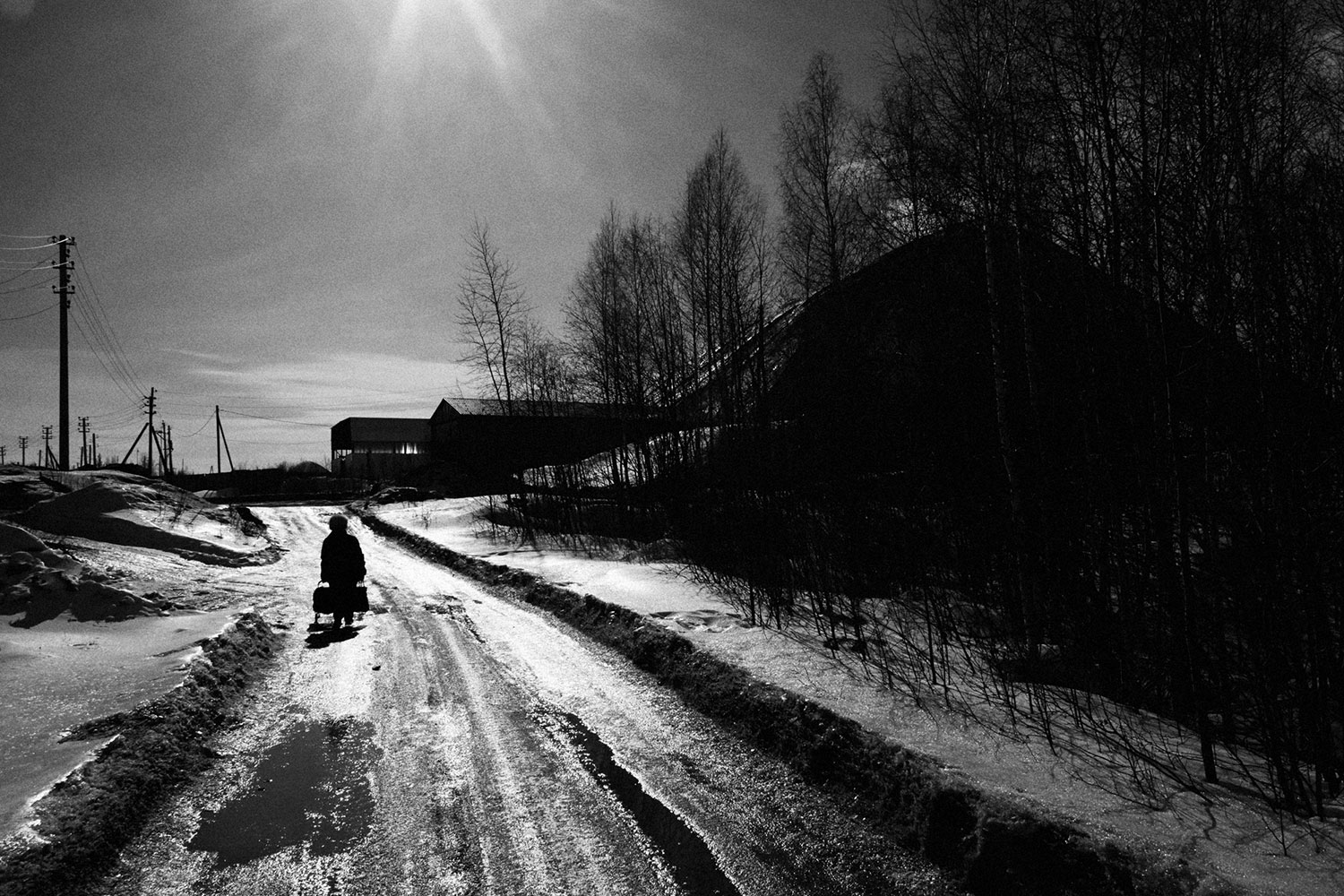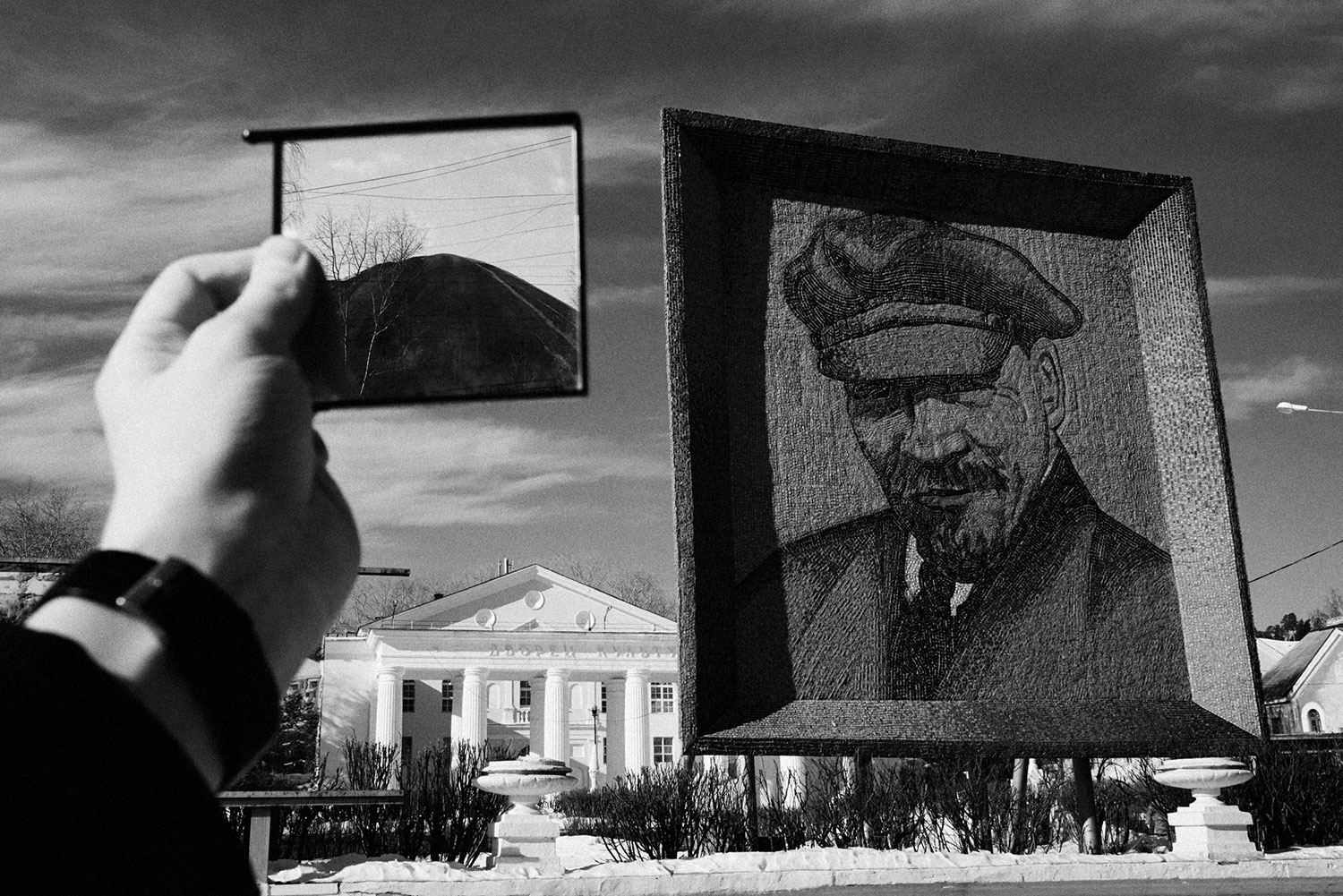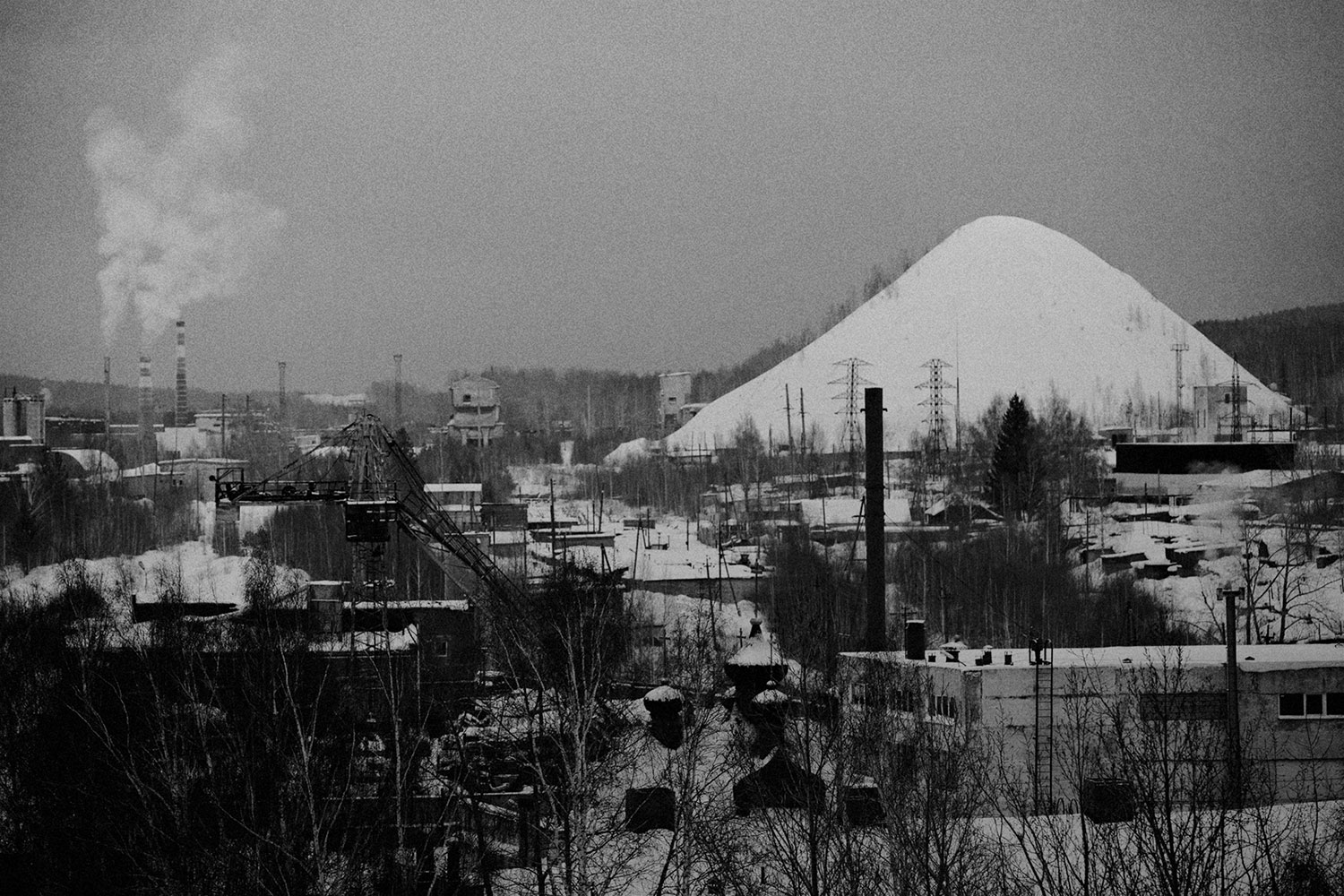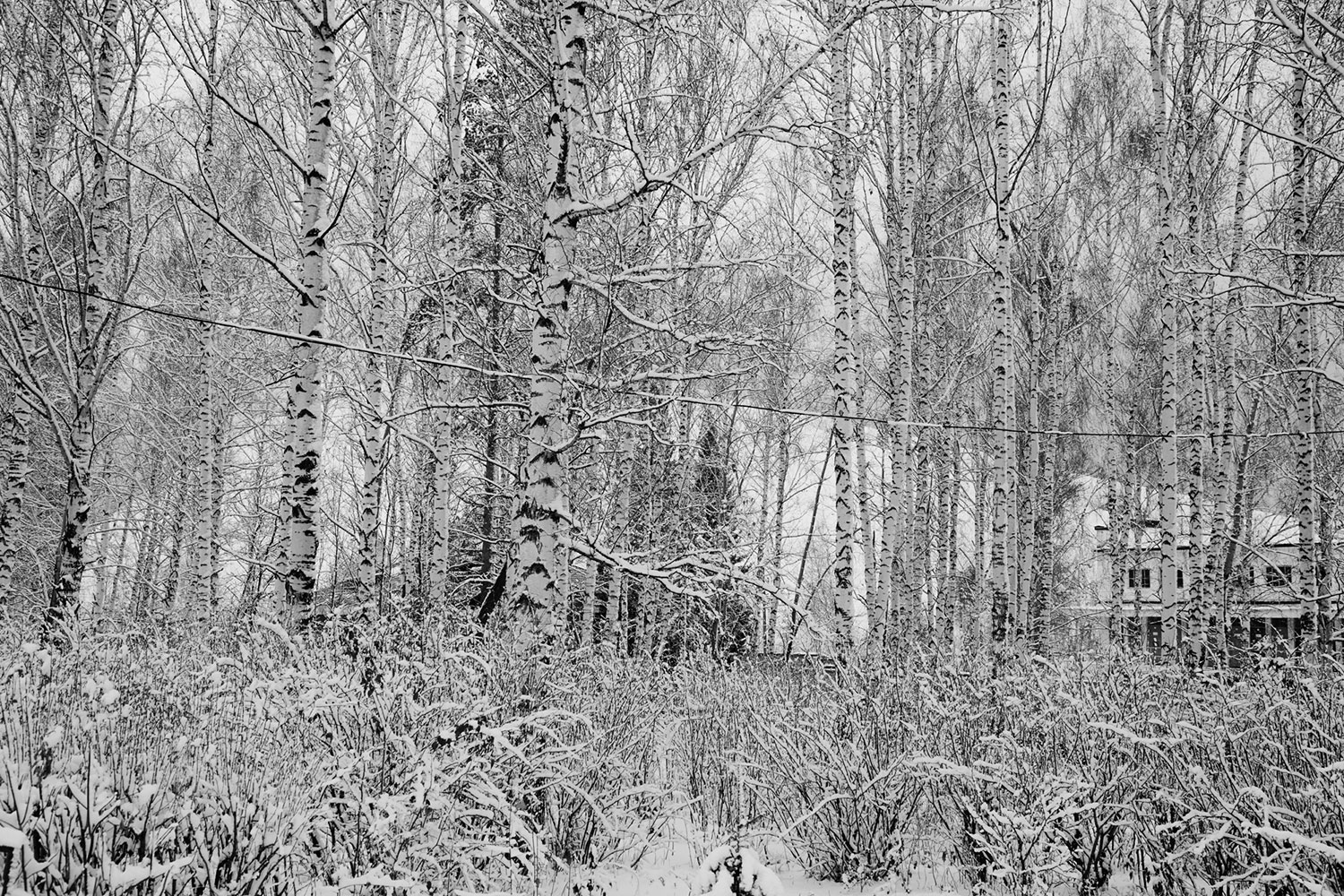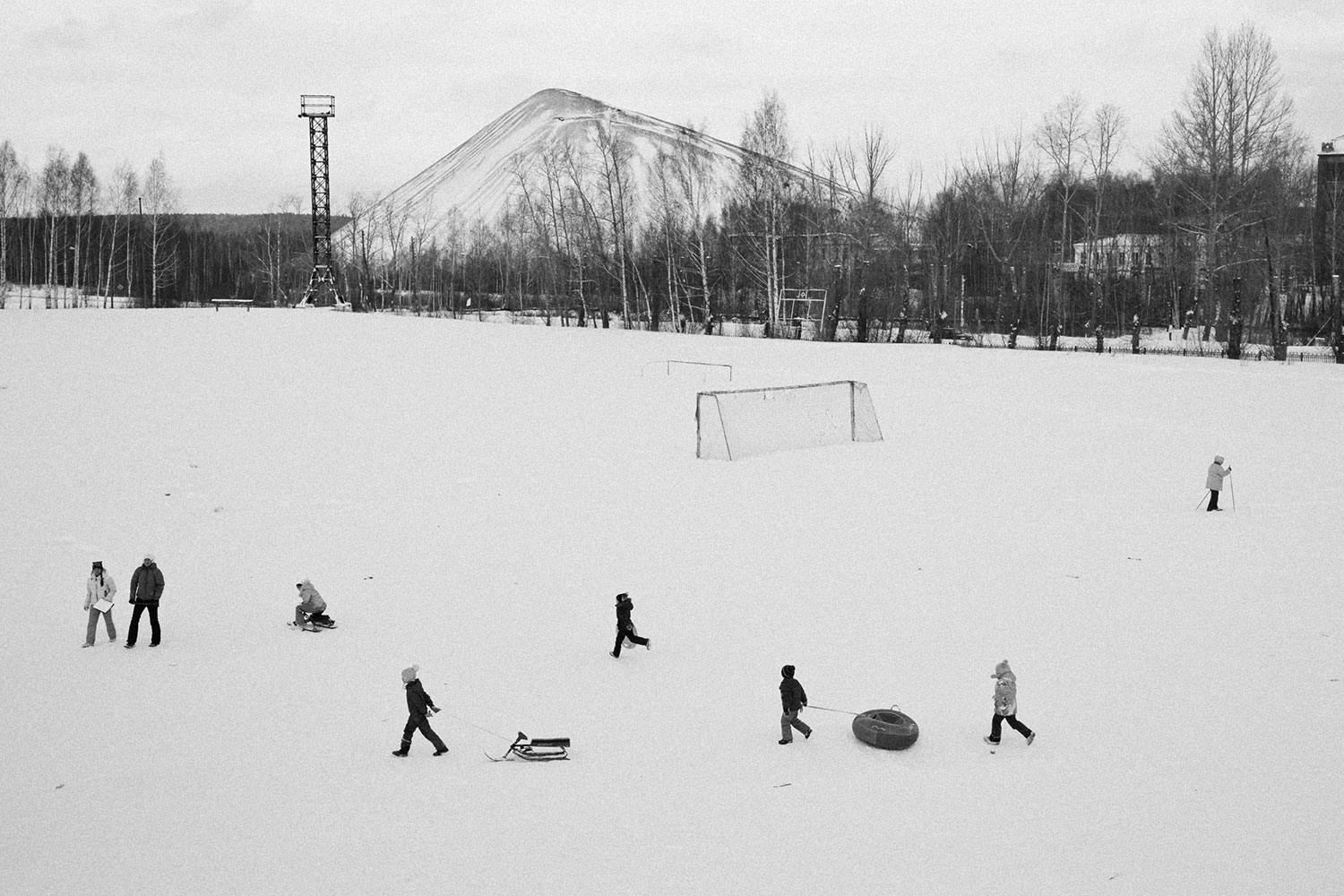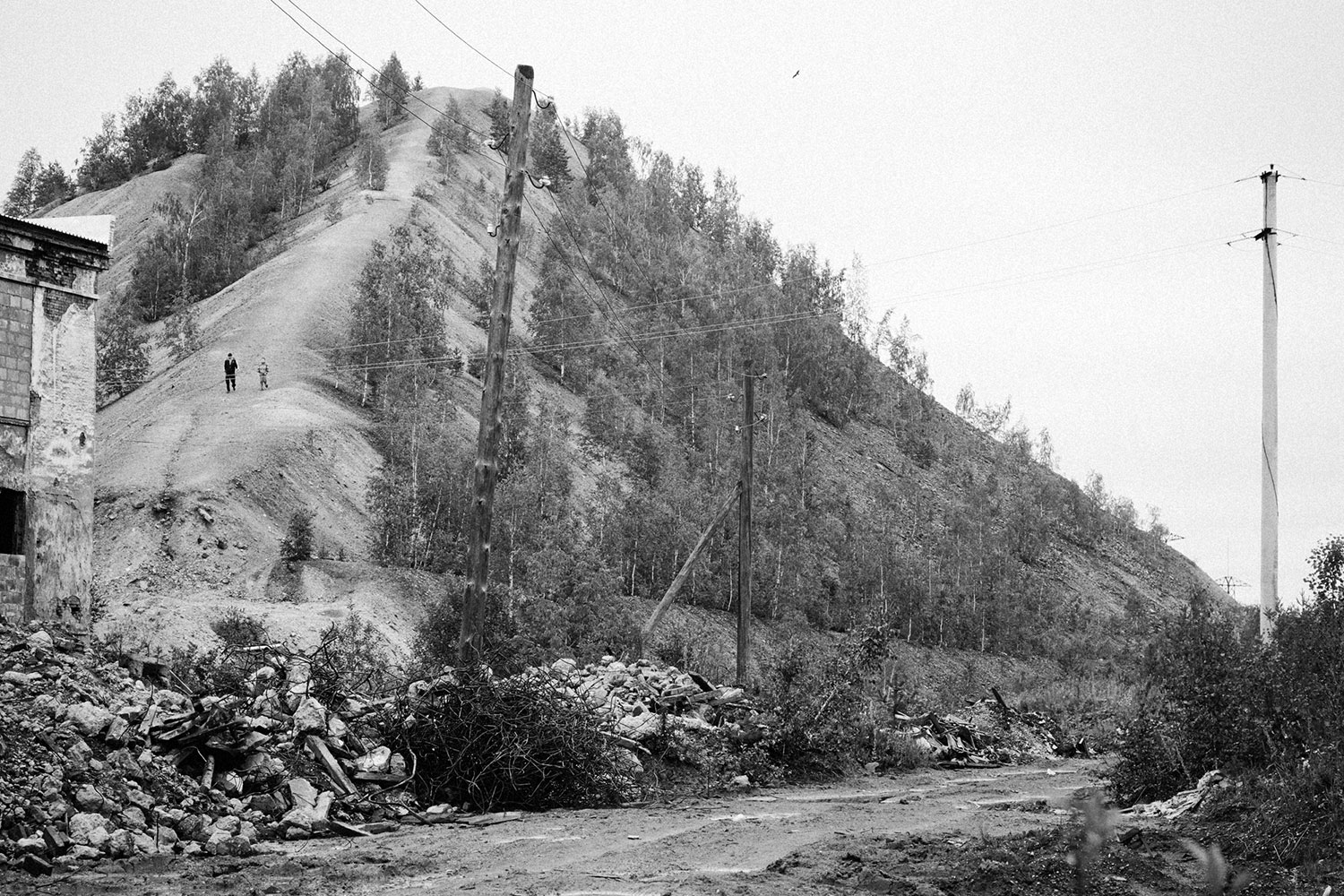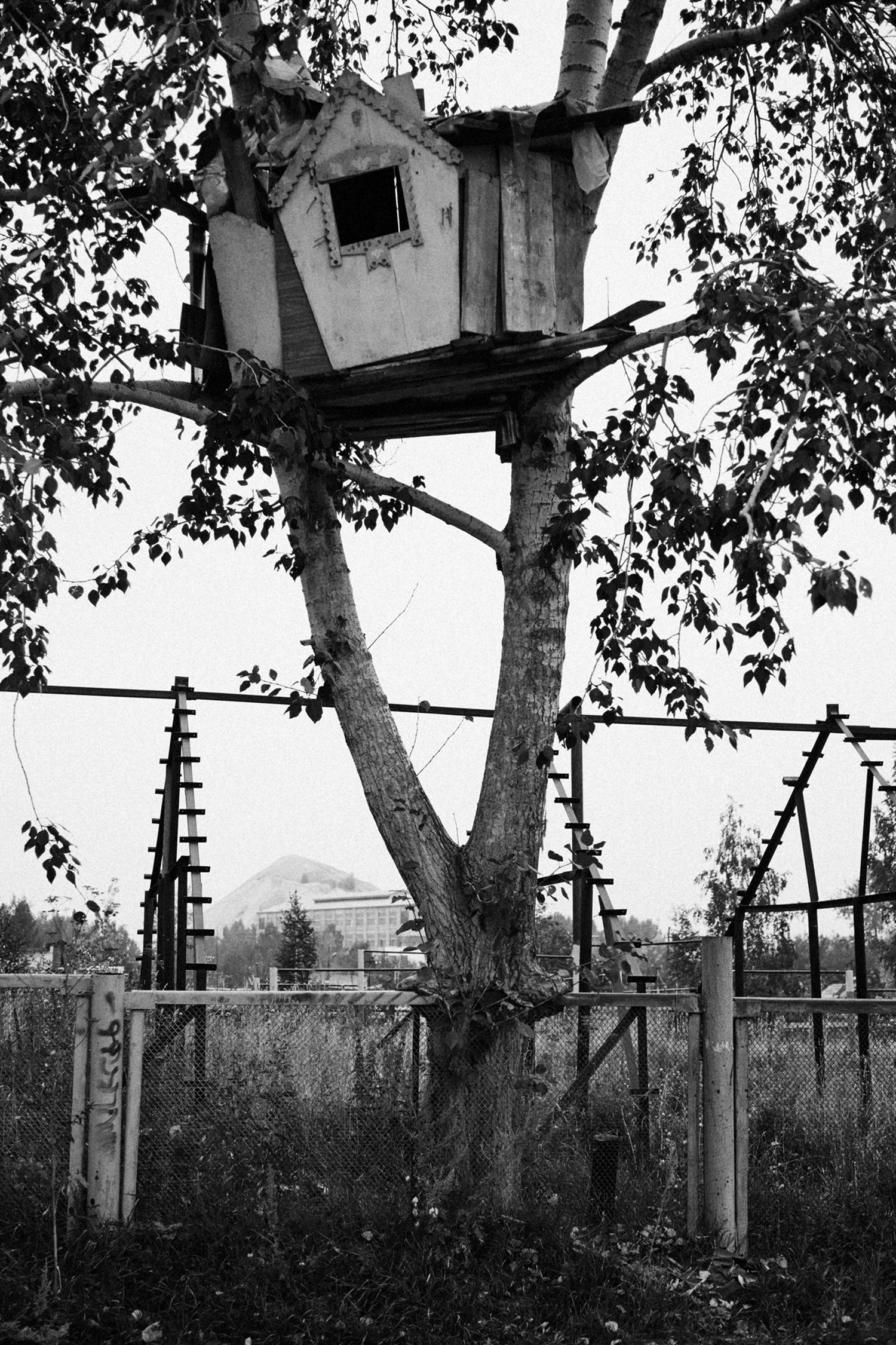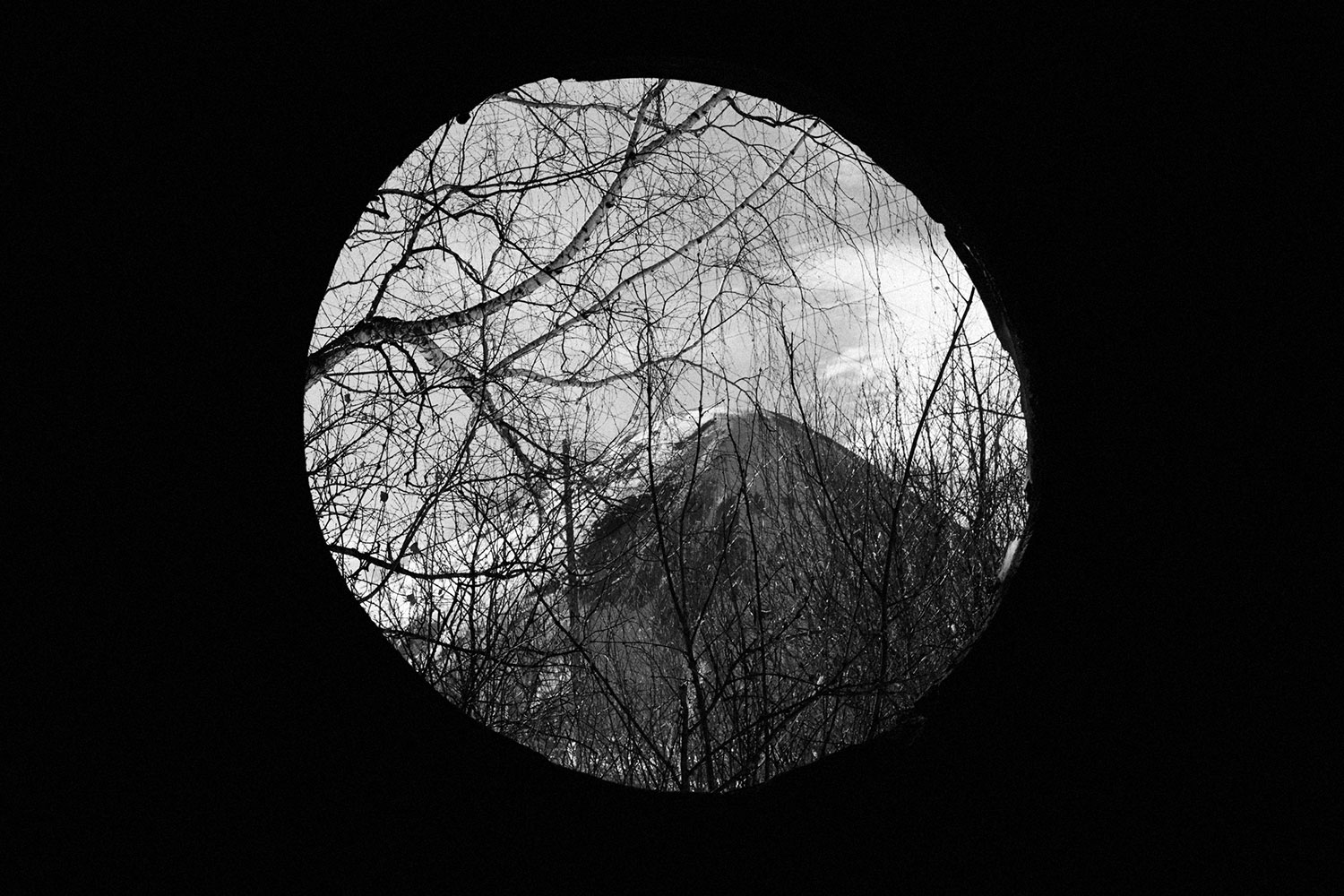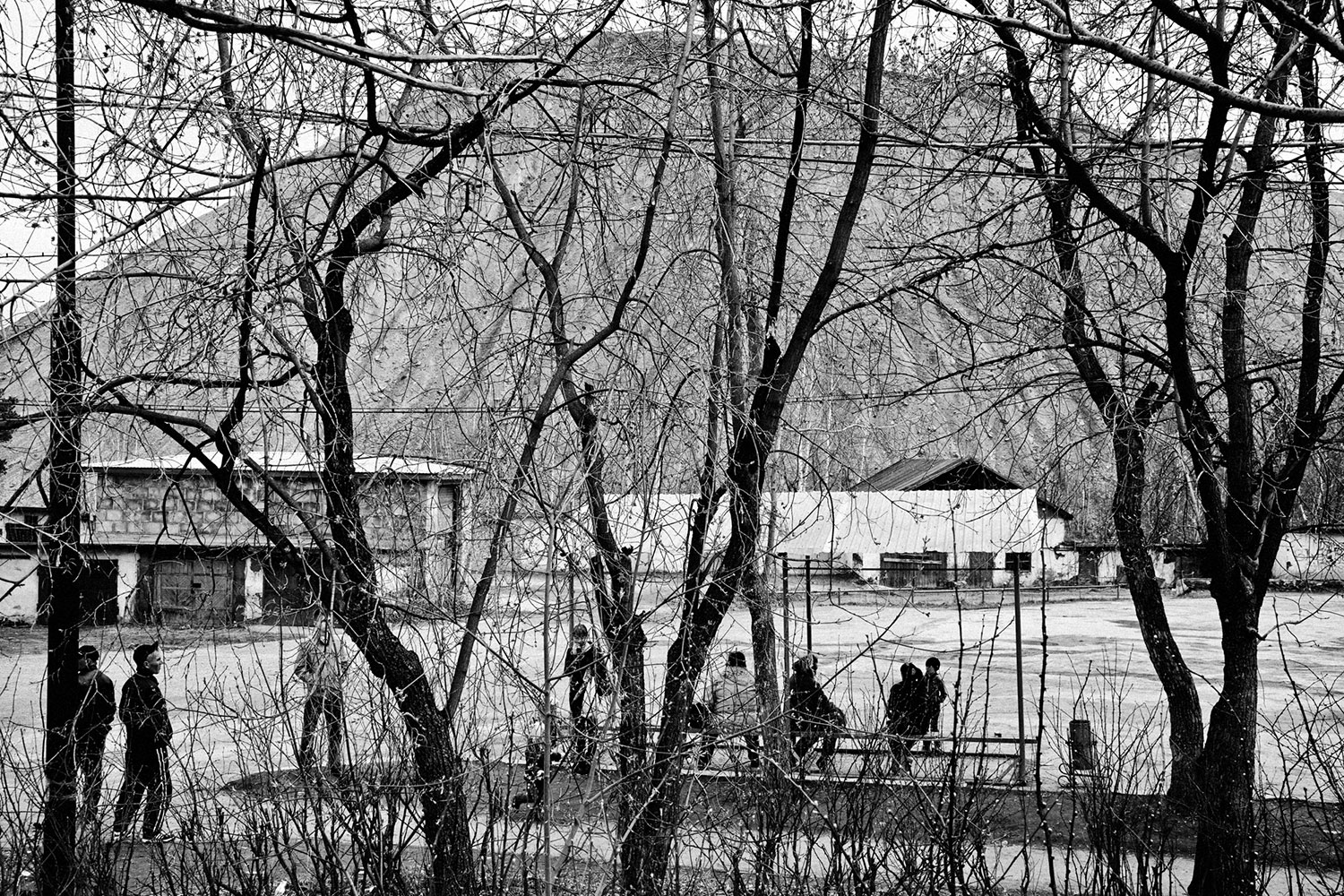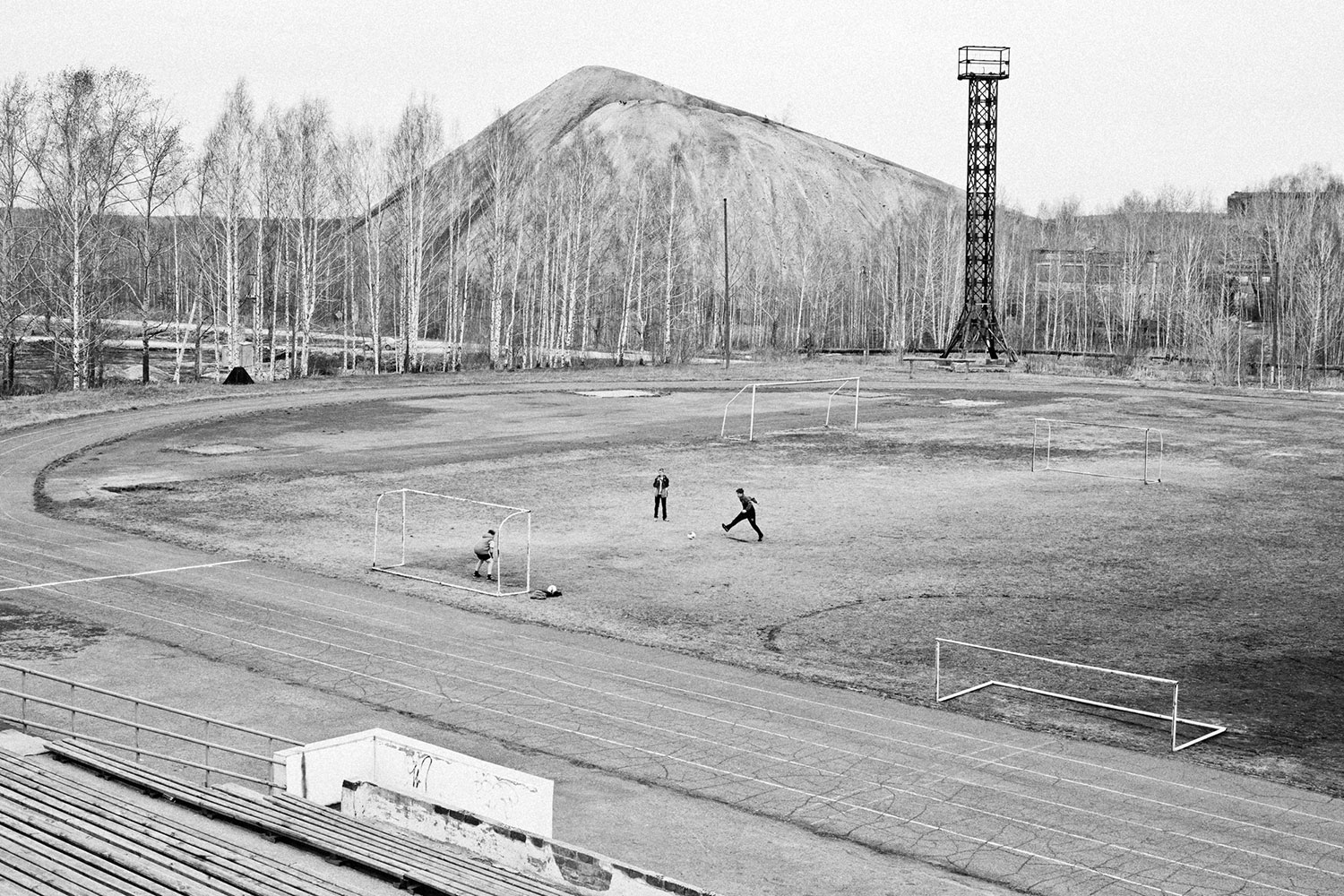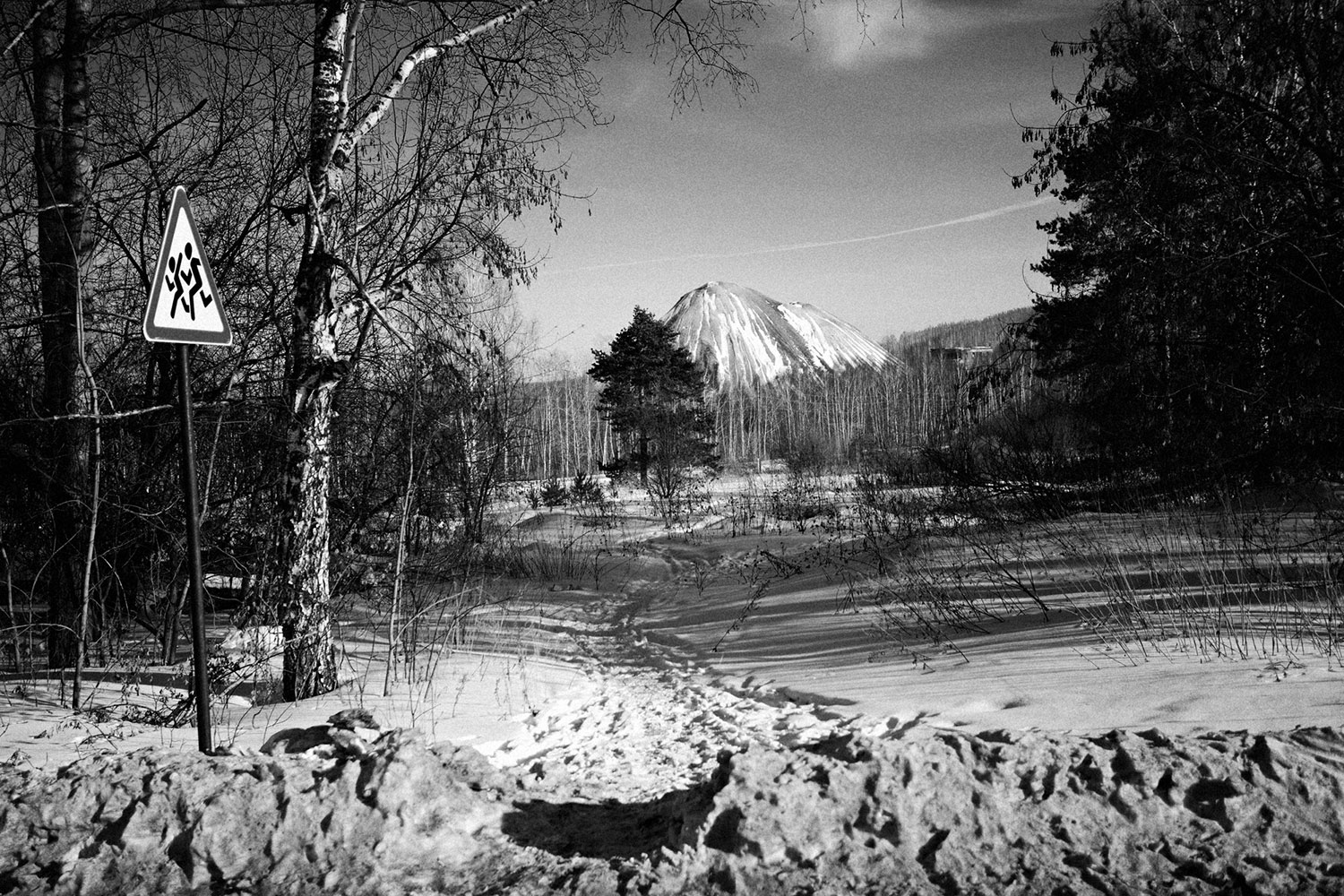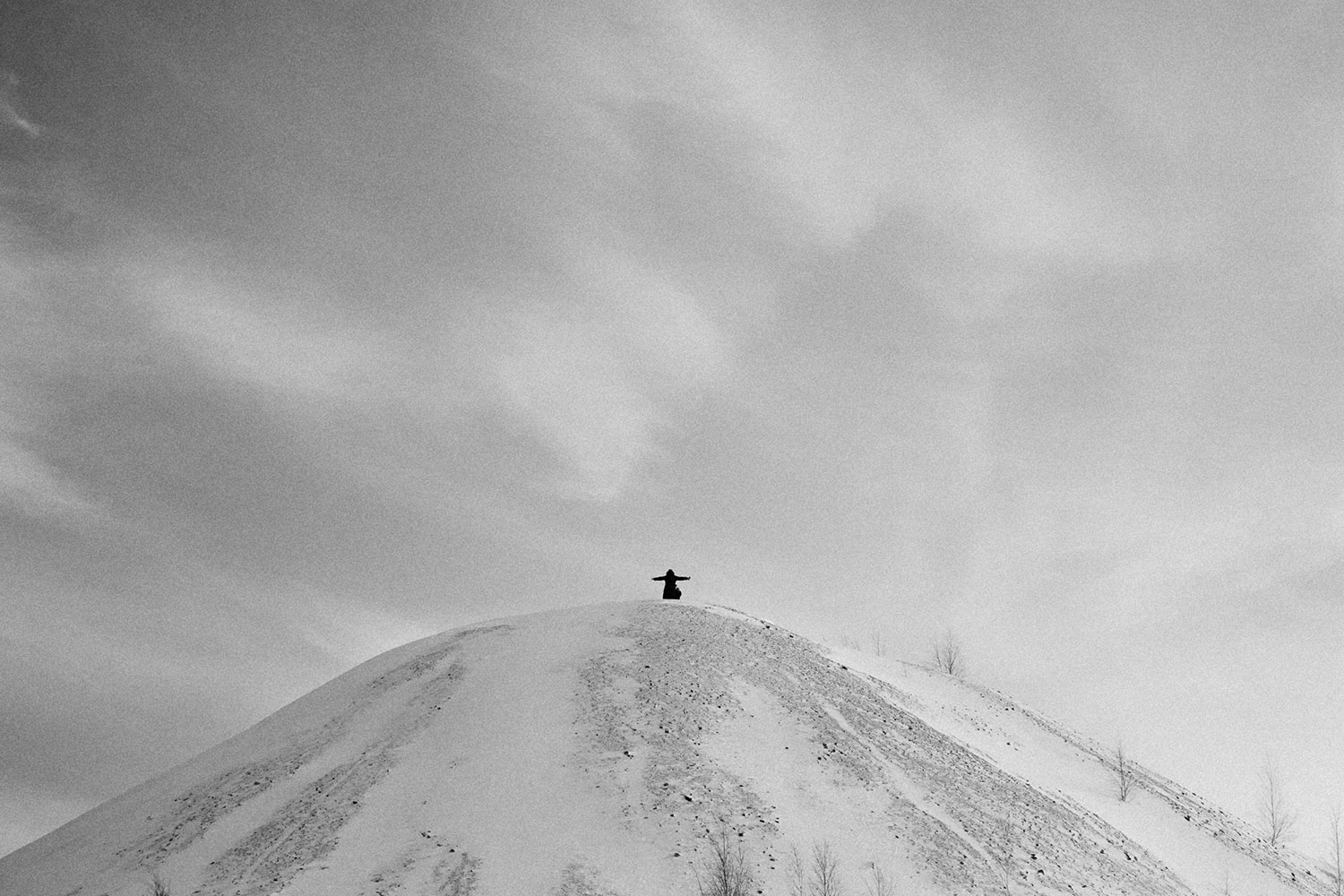In 2012 photographer Fyodor Telkov travelled to the small town of Degtyarsk in the Ural mountains, central Russia. A bizarre landmark immediately caught his attention: two enormous waste heaps — mountains of dead rock from two mines, Capital 1 and Capital 2 – towered over opposite ends of the city. Only after he left did he realise the heaps reminded him of the iconic silhouette of Japan’s Mount Fuji, and particularly Katsusiki Hokusay’s famously sublime series of engravings Thirty-six Views of Fuji.
The population of Degtyarsk is around 16,000. Once prosperous, the mining town is now wholly subsidised by the regional government. “The production of copper ore, successful in the past, left a real environmental disaster. Waste heaps are visible almost from any point in Degtyarsk,” Telkov says.
In his series of photographs Telkov tried to create his version of Thirty-six Views of Fuji. He captured the artificial mountains from different points of the city in different seasons: covered by snow or glowing in the sunlight, reflected in water or a tiny pyramid in someone’s window — a constant reminder of the town’s mining past. “For people in the town the heaps are special because everyone used to work in the two mines,” Telkov says. “I heard that once the Japanese wanted to buy the heaps because the rock has a wide variety of minerals and metals. The rumour goes that Russia refused to sell them, explaining that the heaps have a strategic supply of copper.” It’s likely then the heaps will remain where they are, gradually moving from something temporary to an ever-present reminder of the industrial past.
Text: Anastasiia Fedorova
Image: Fyodor Telkov
